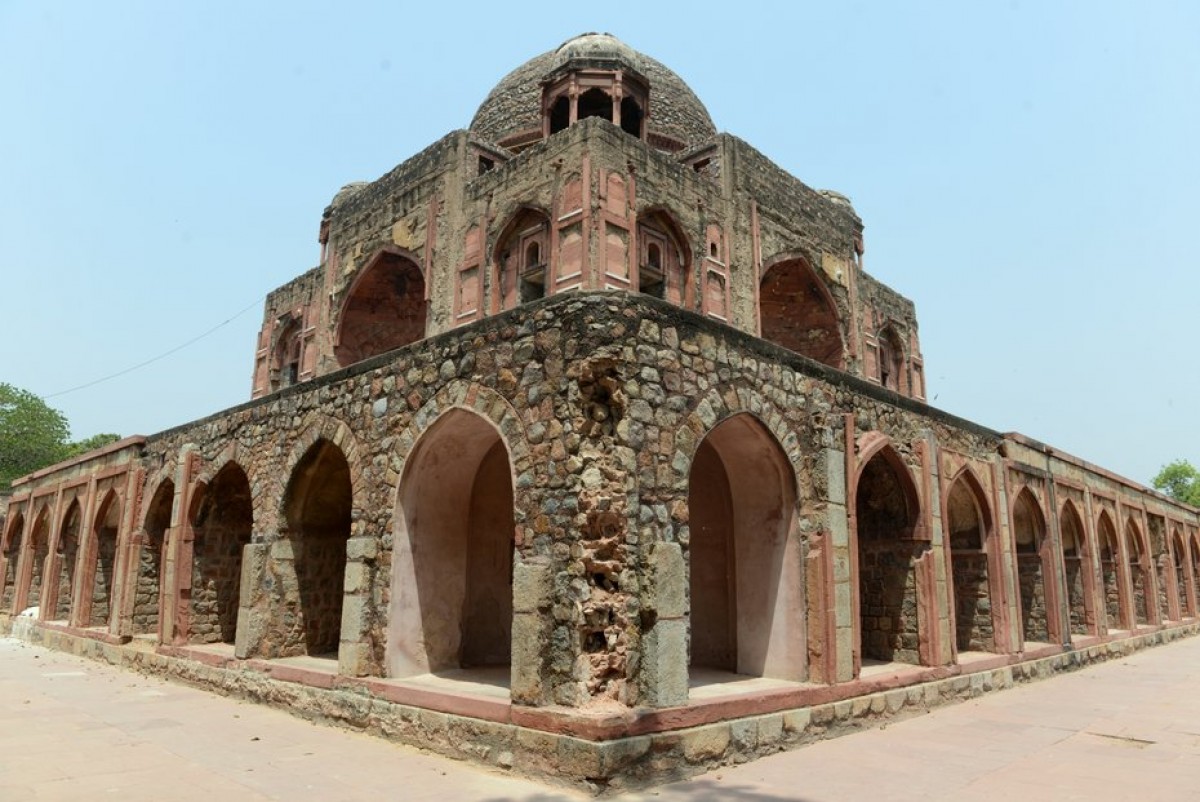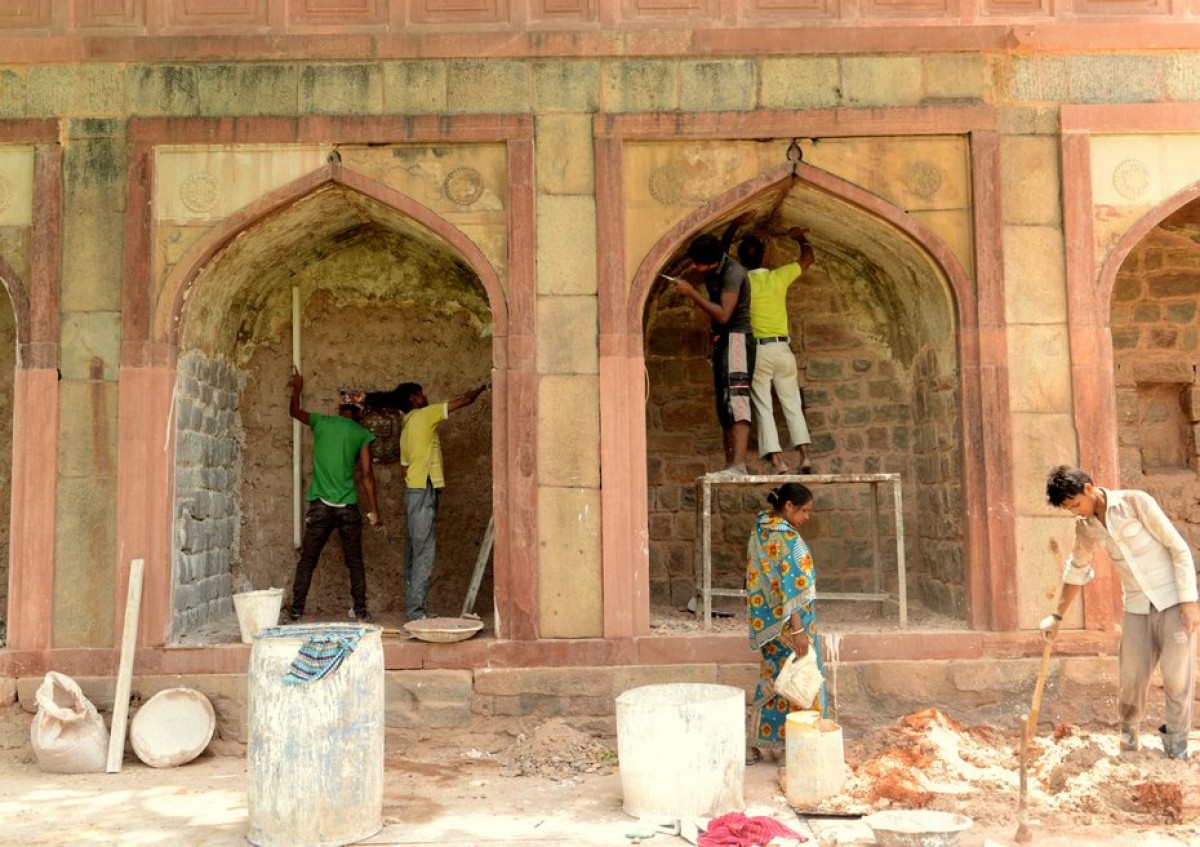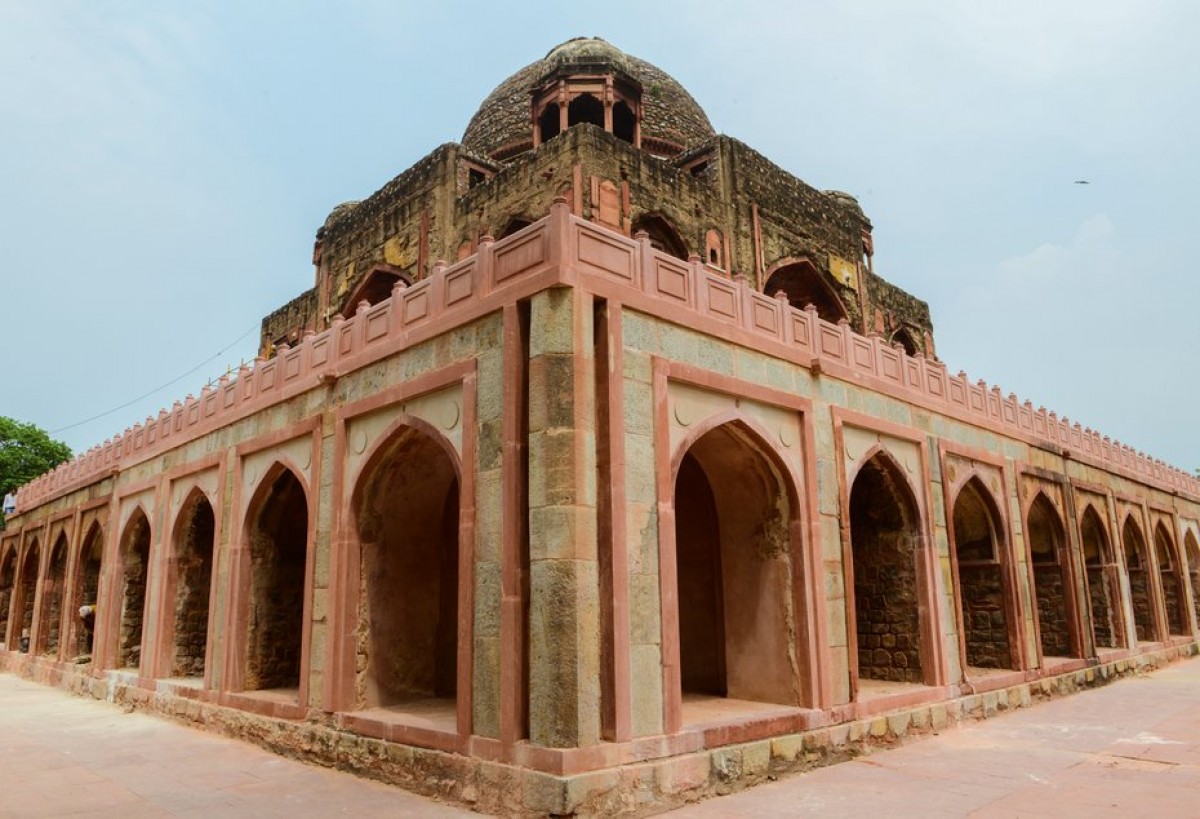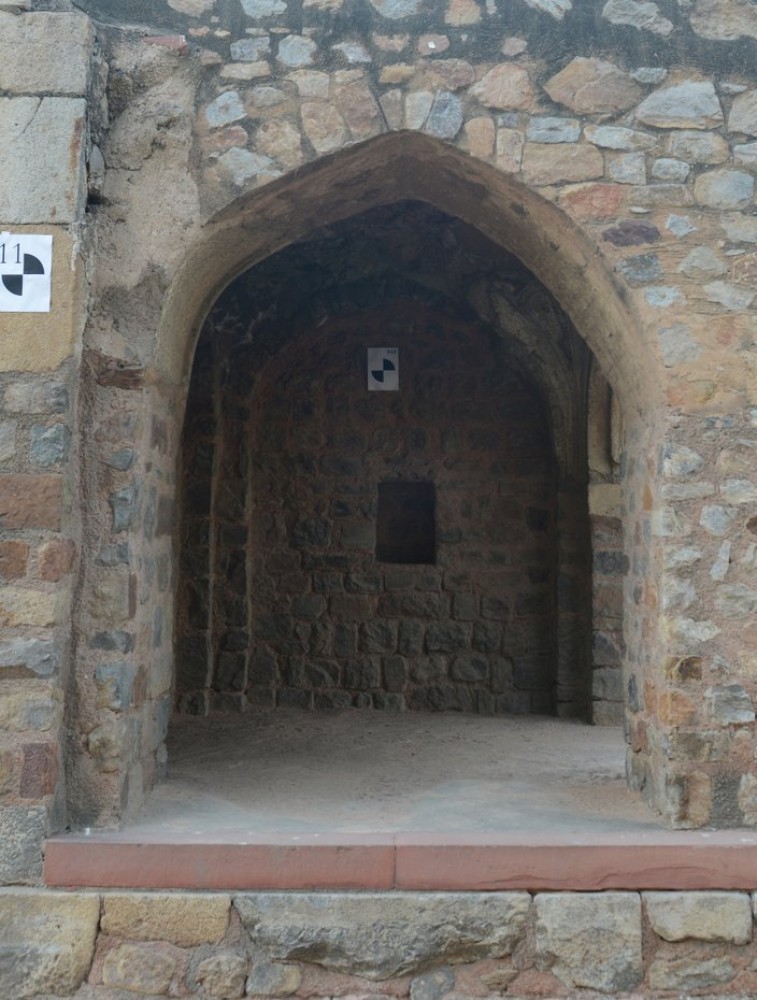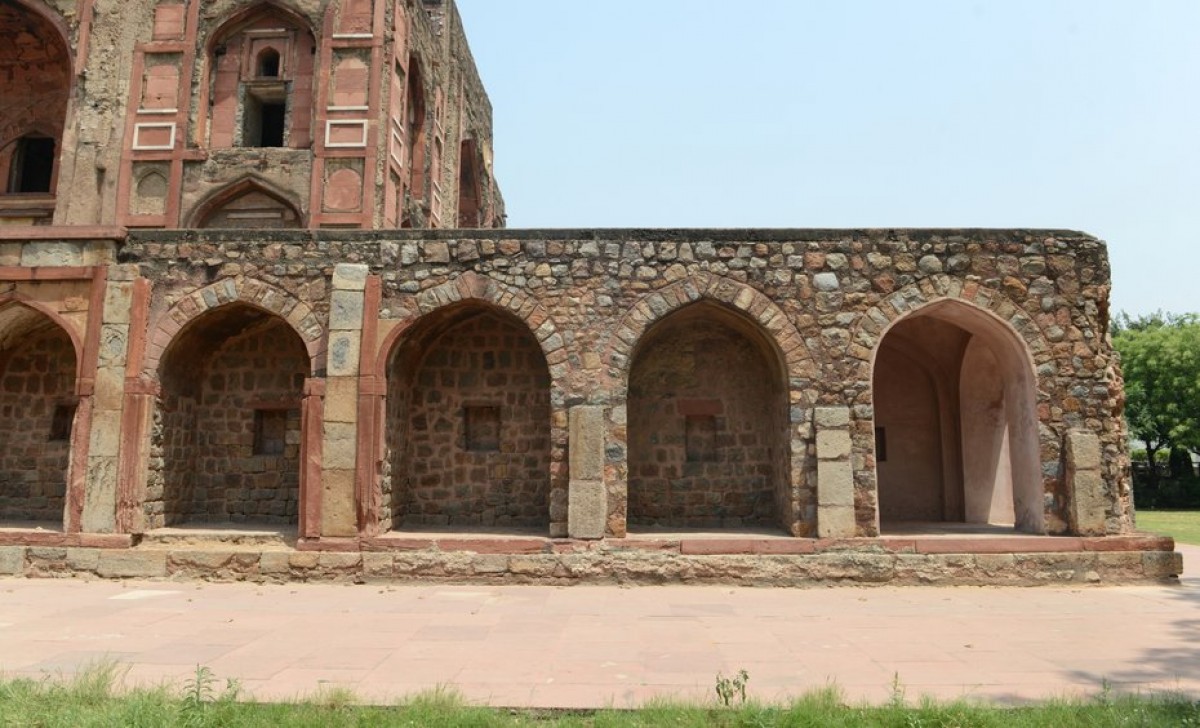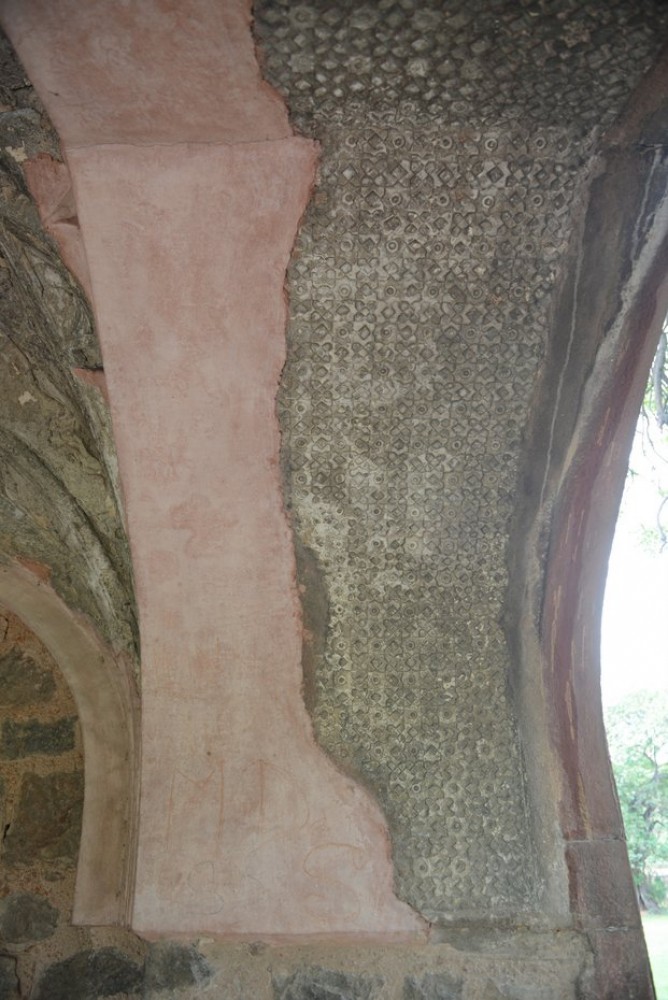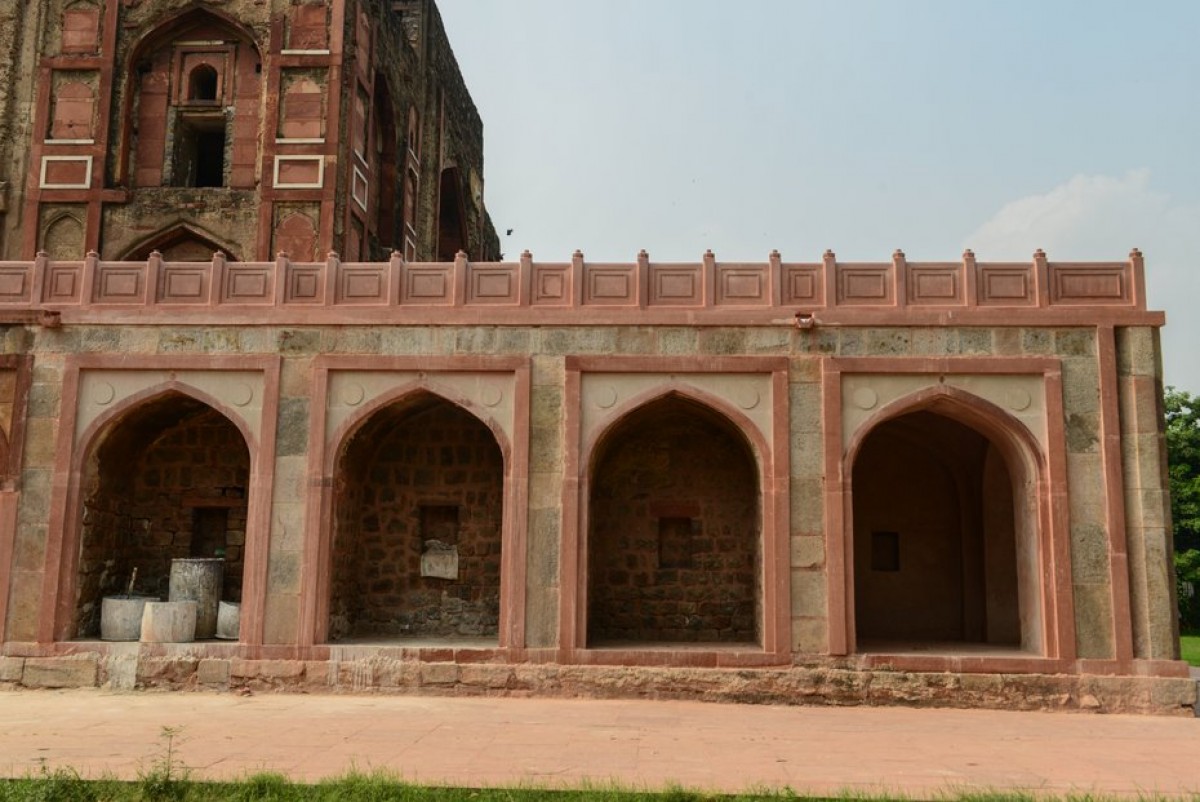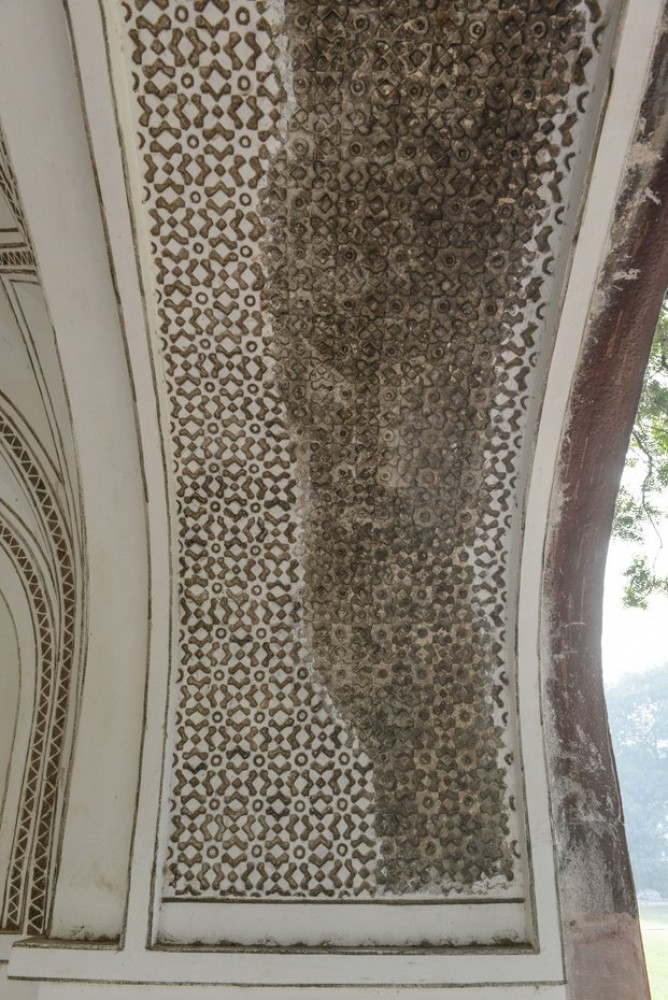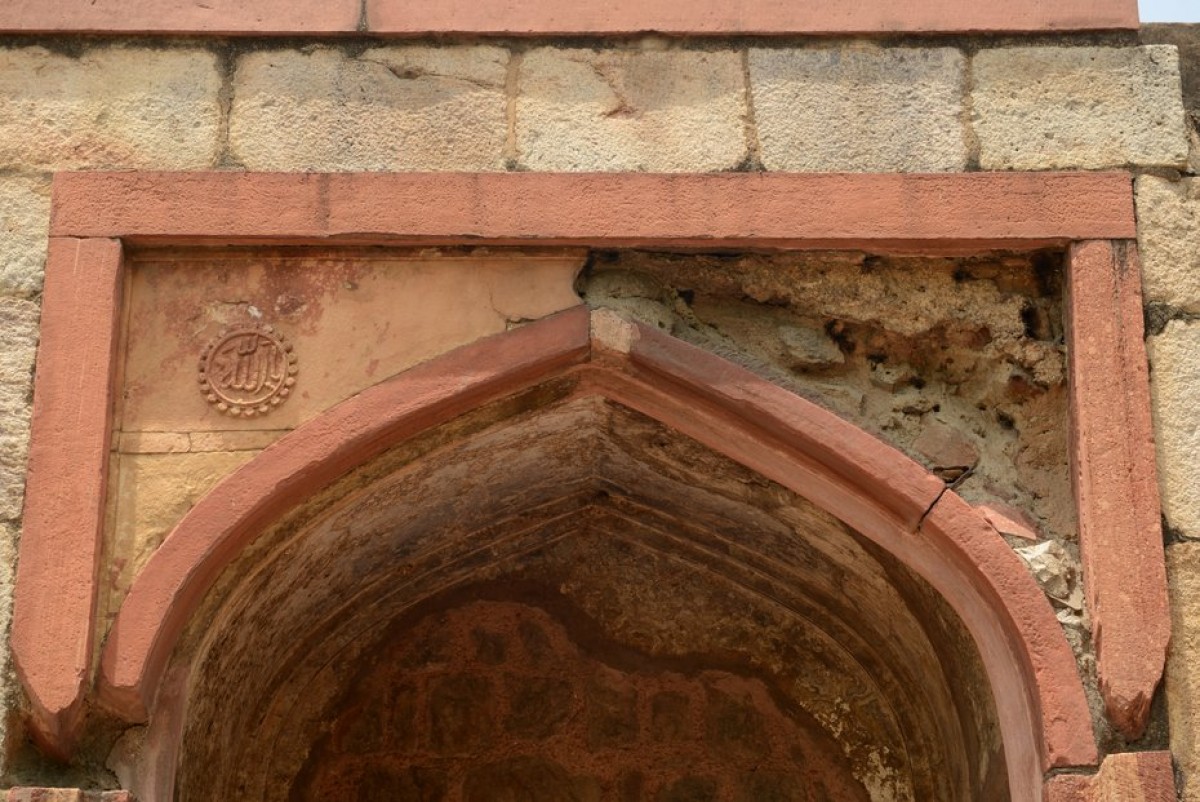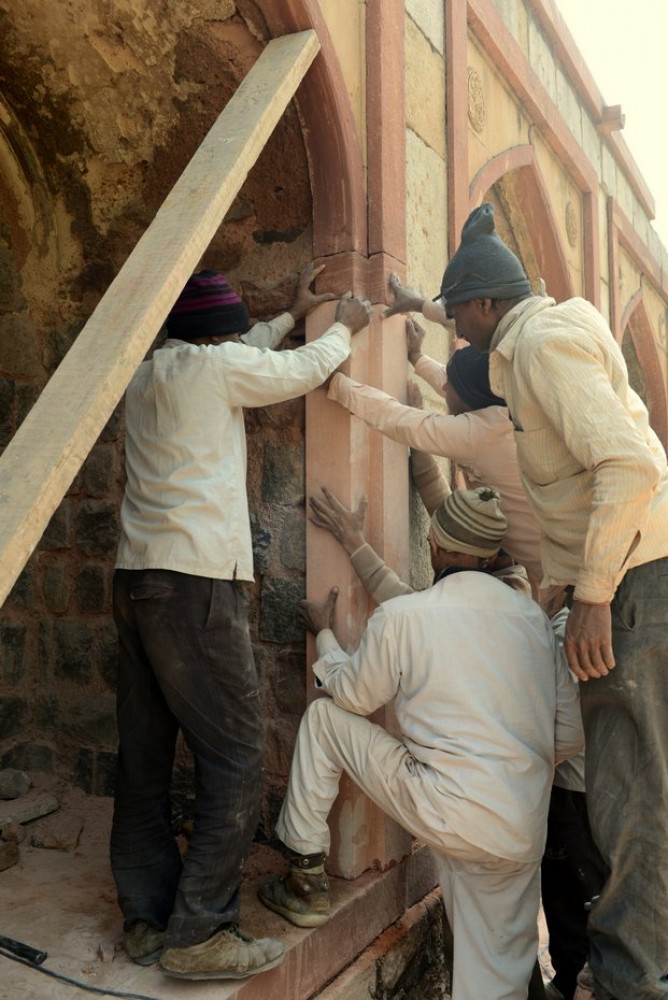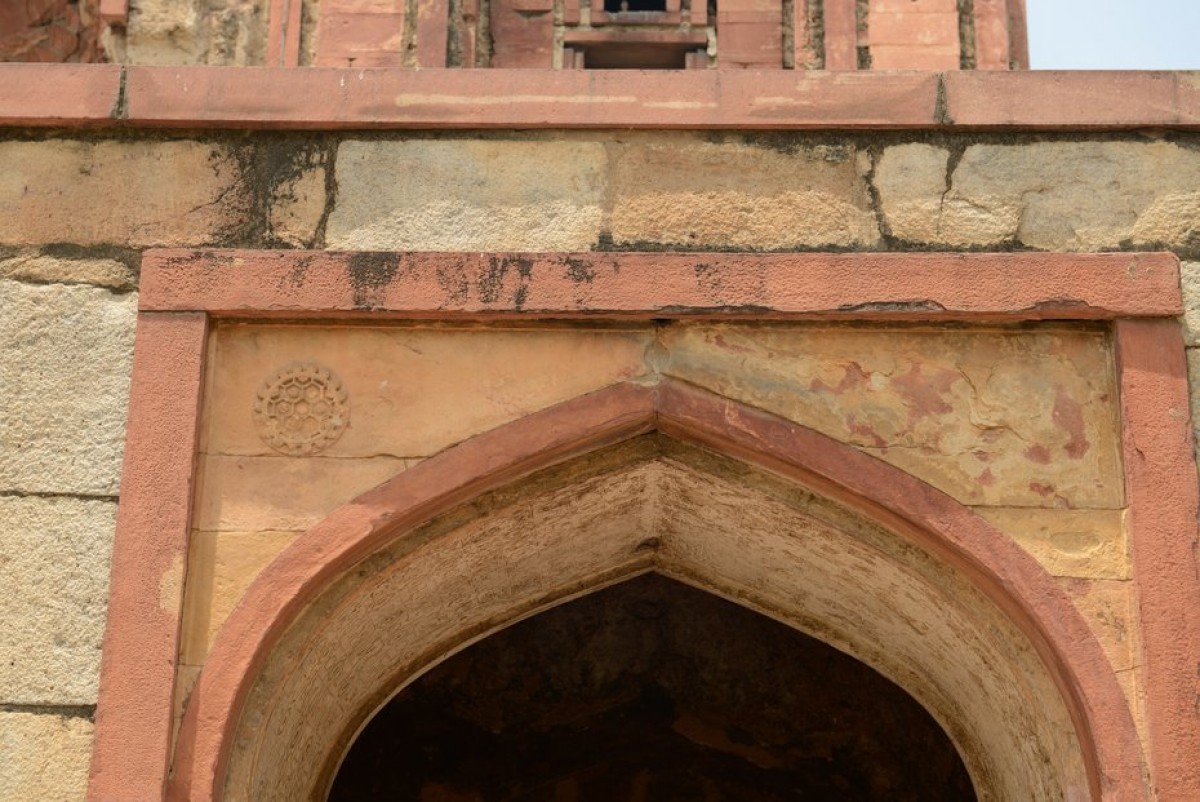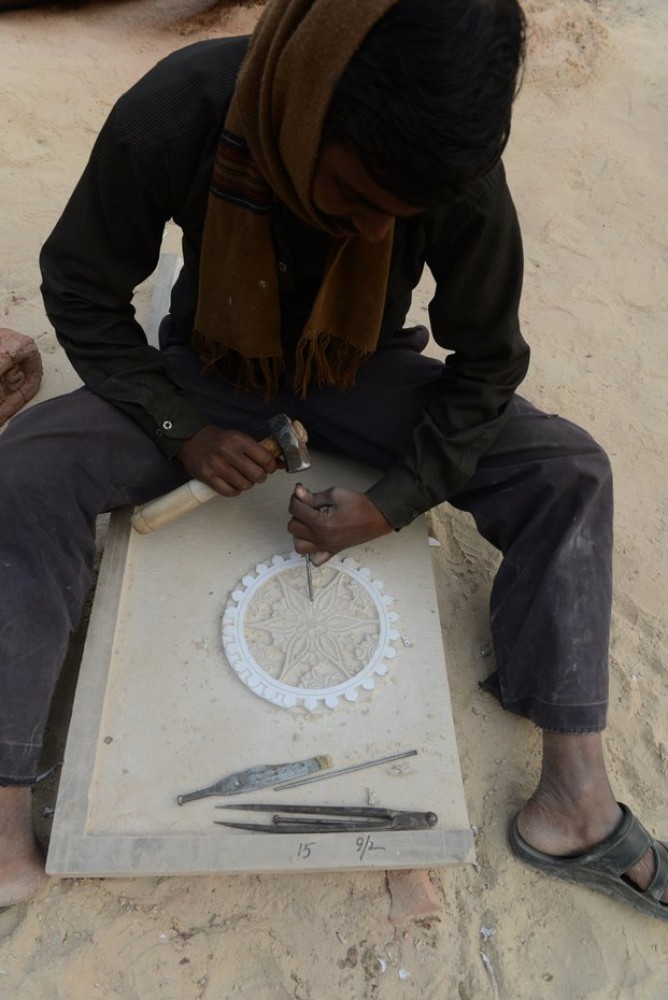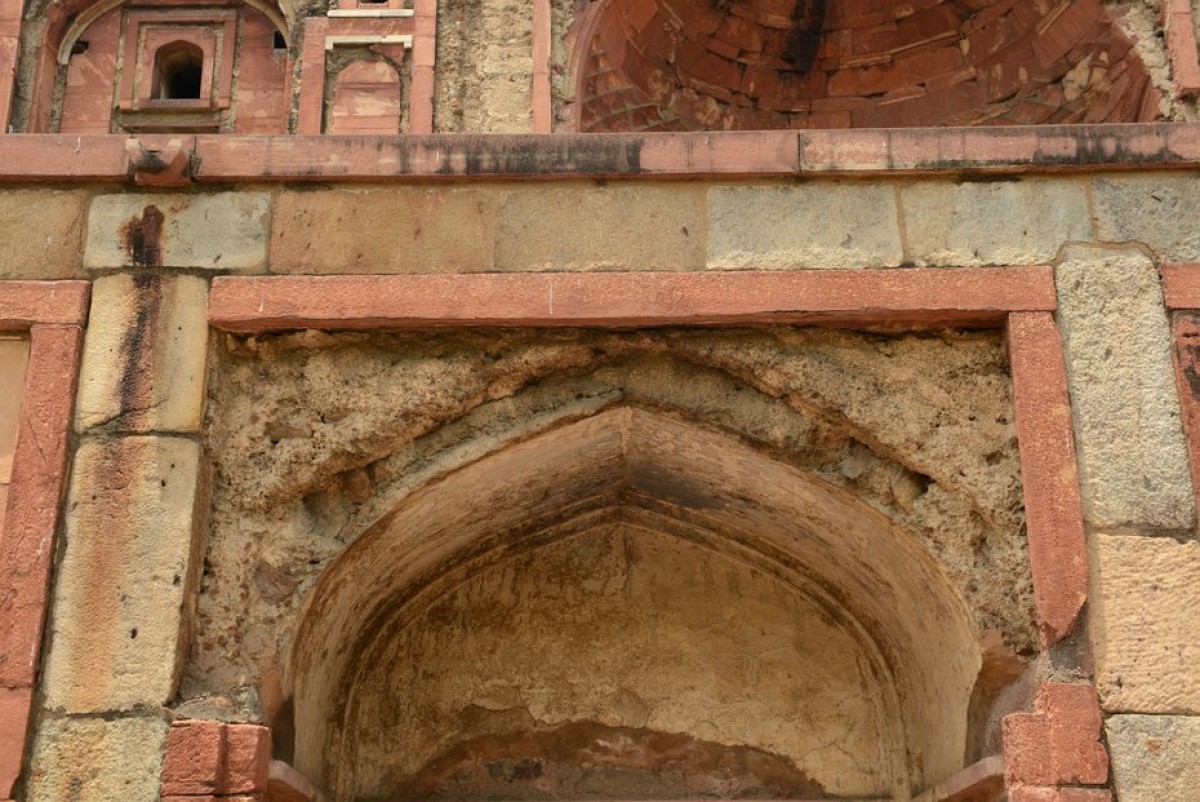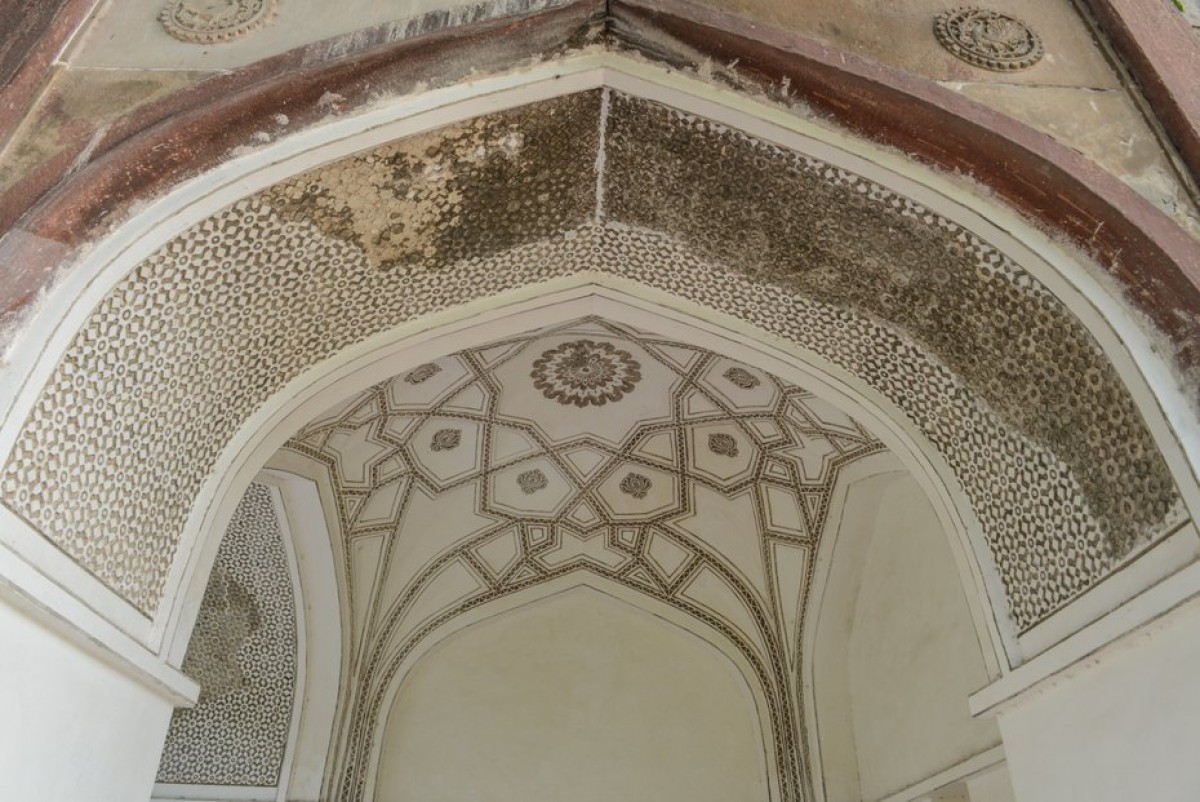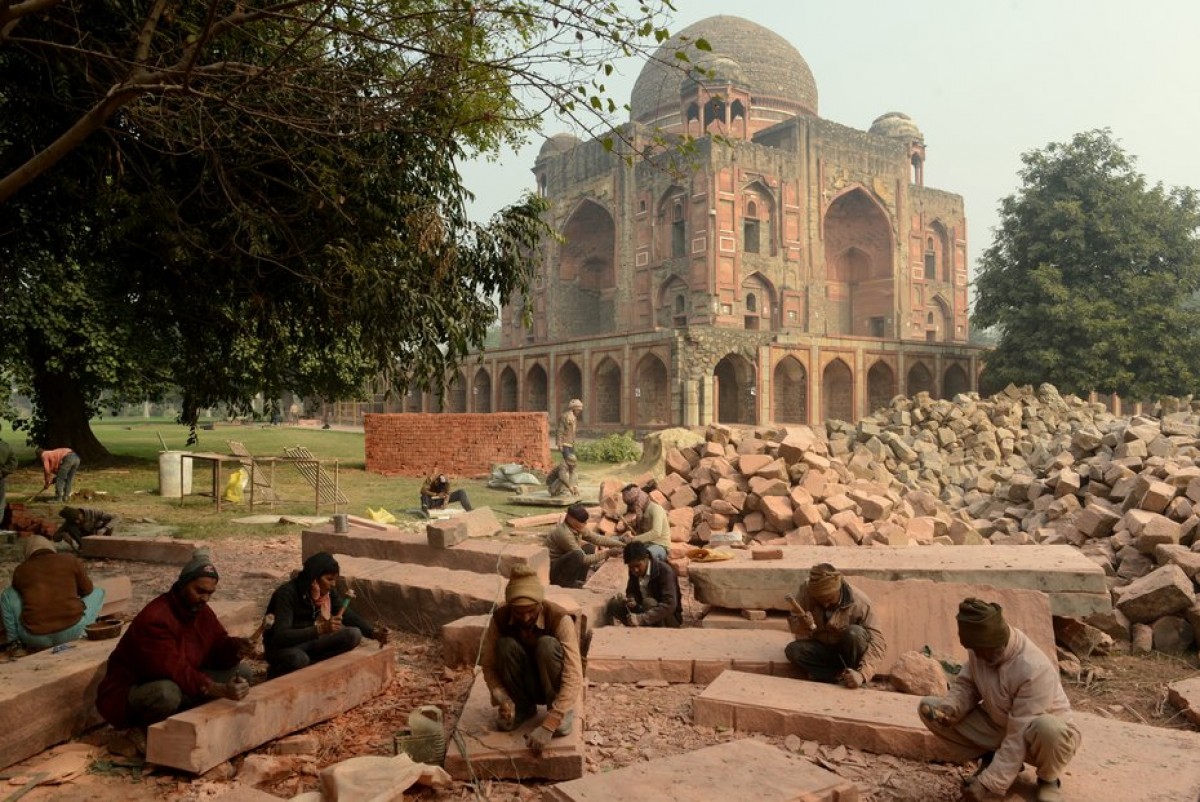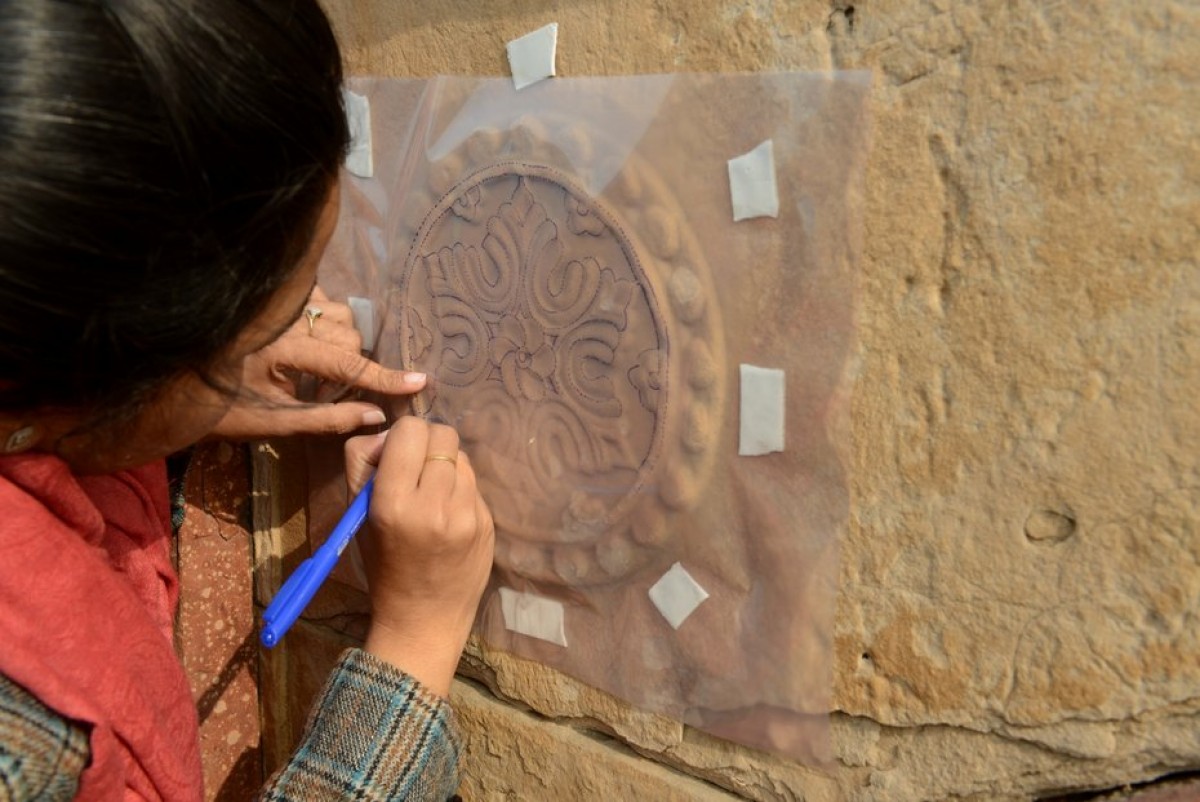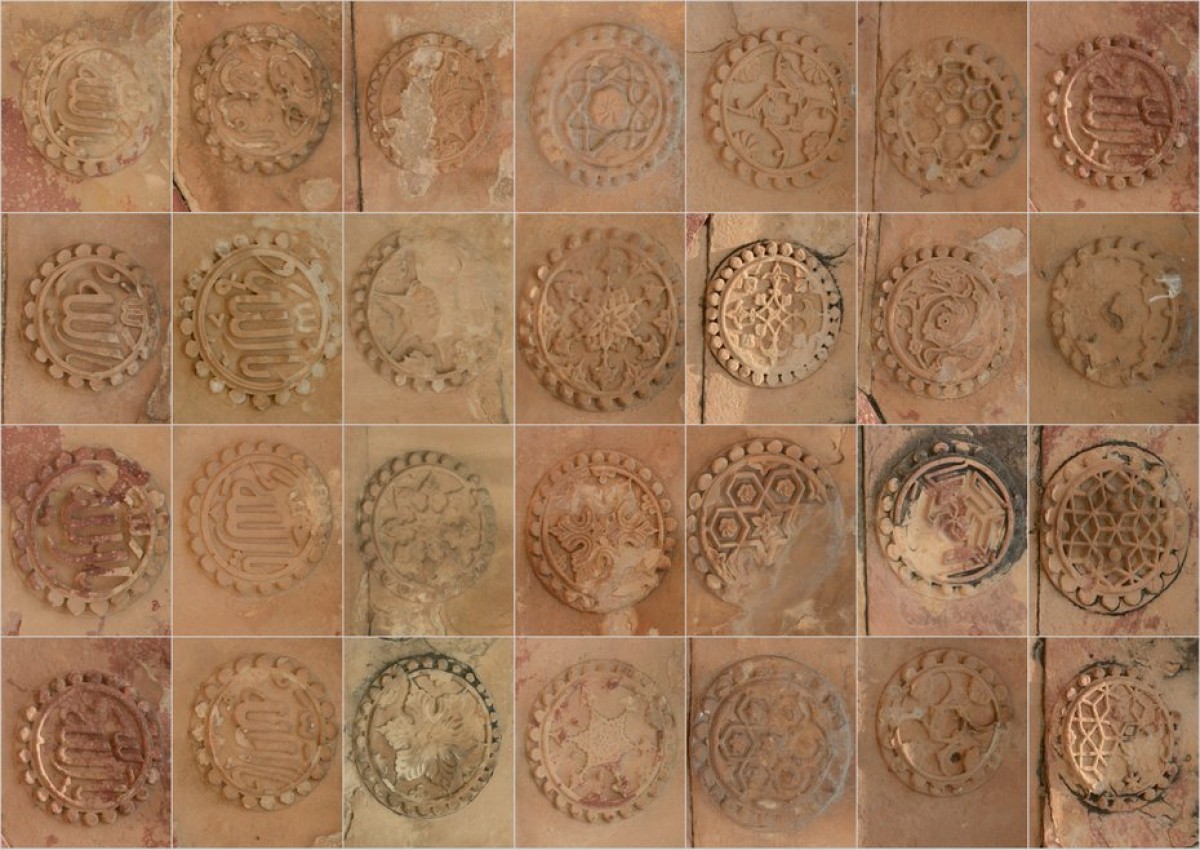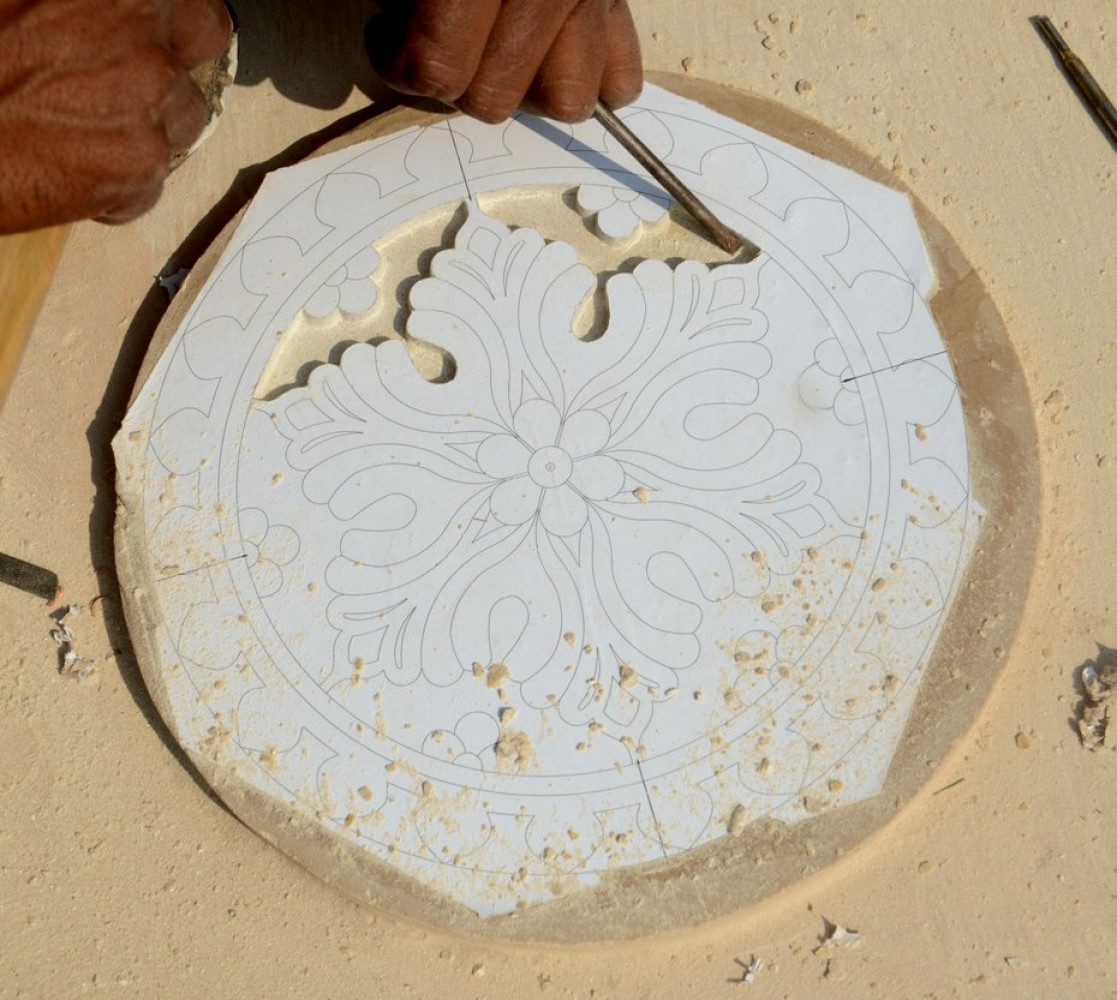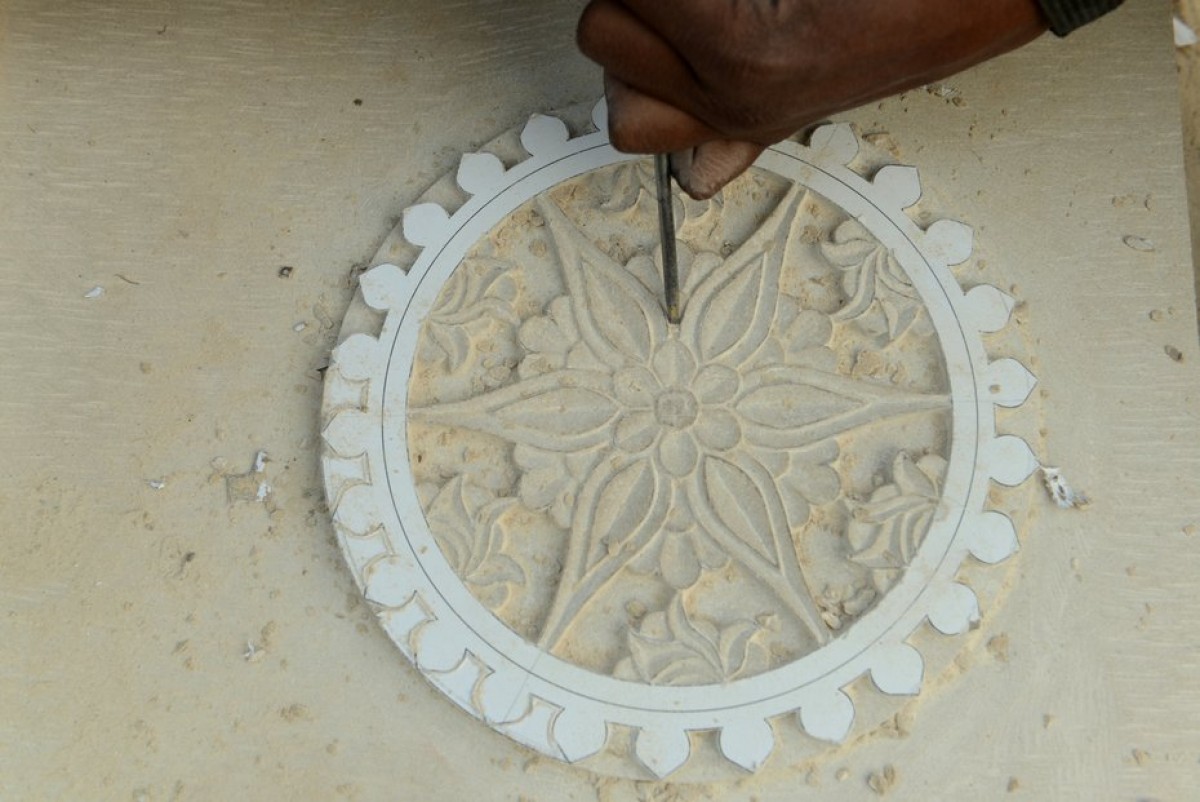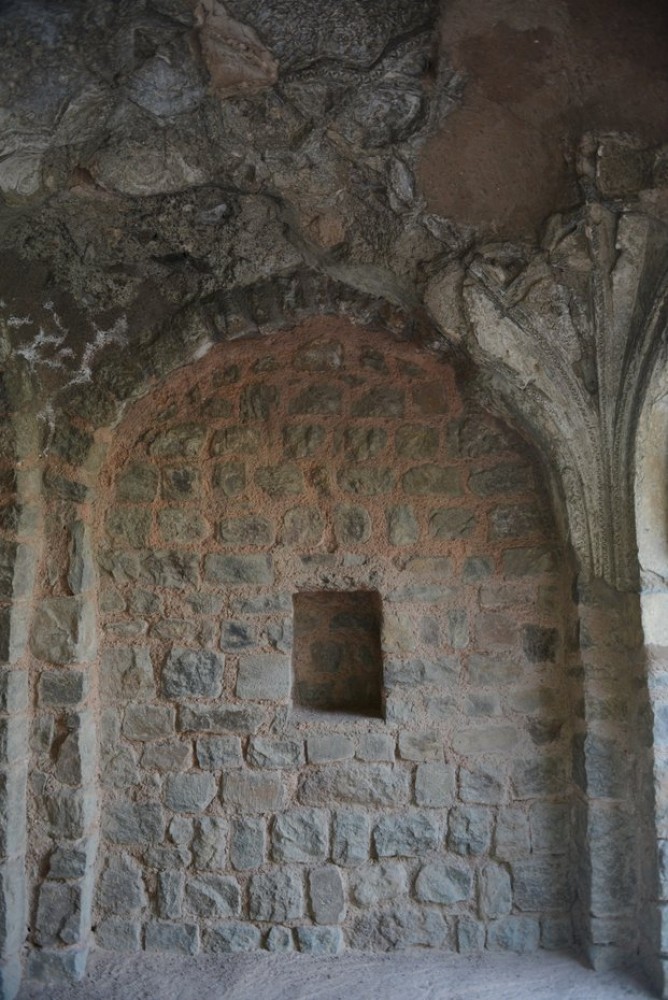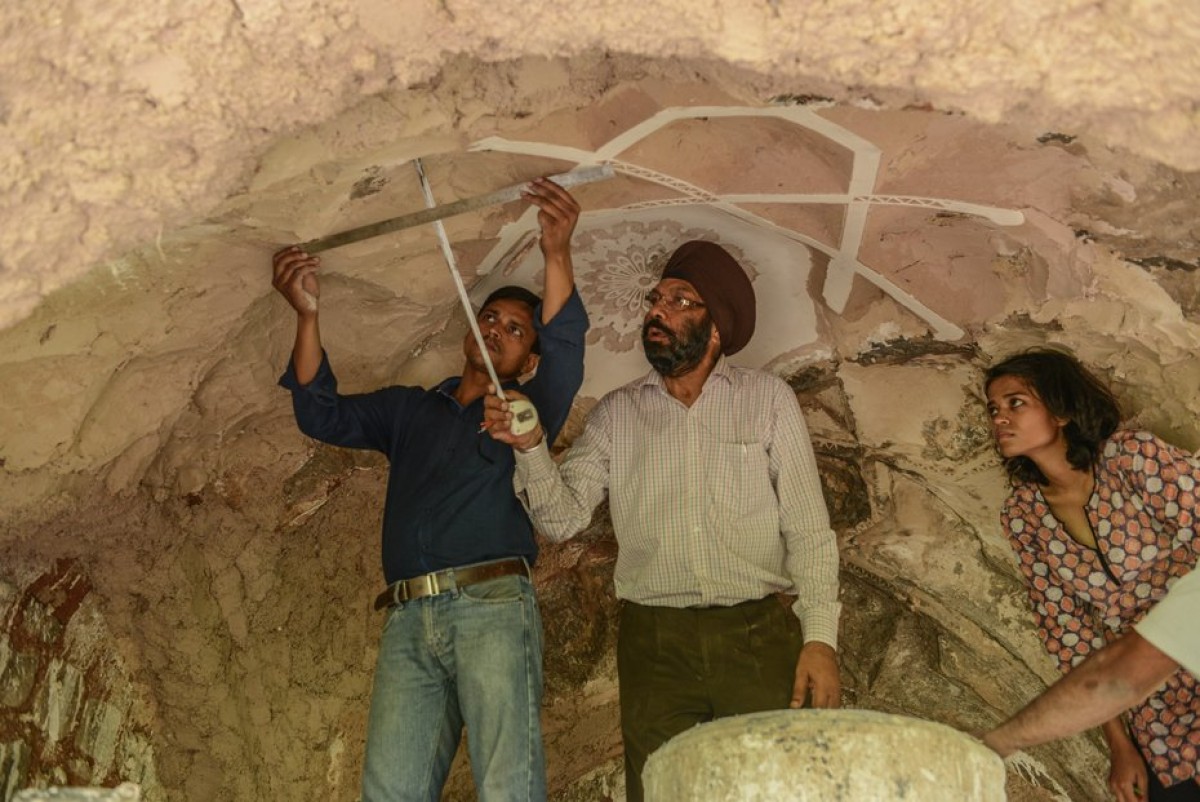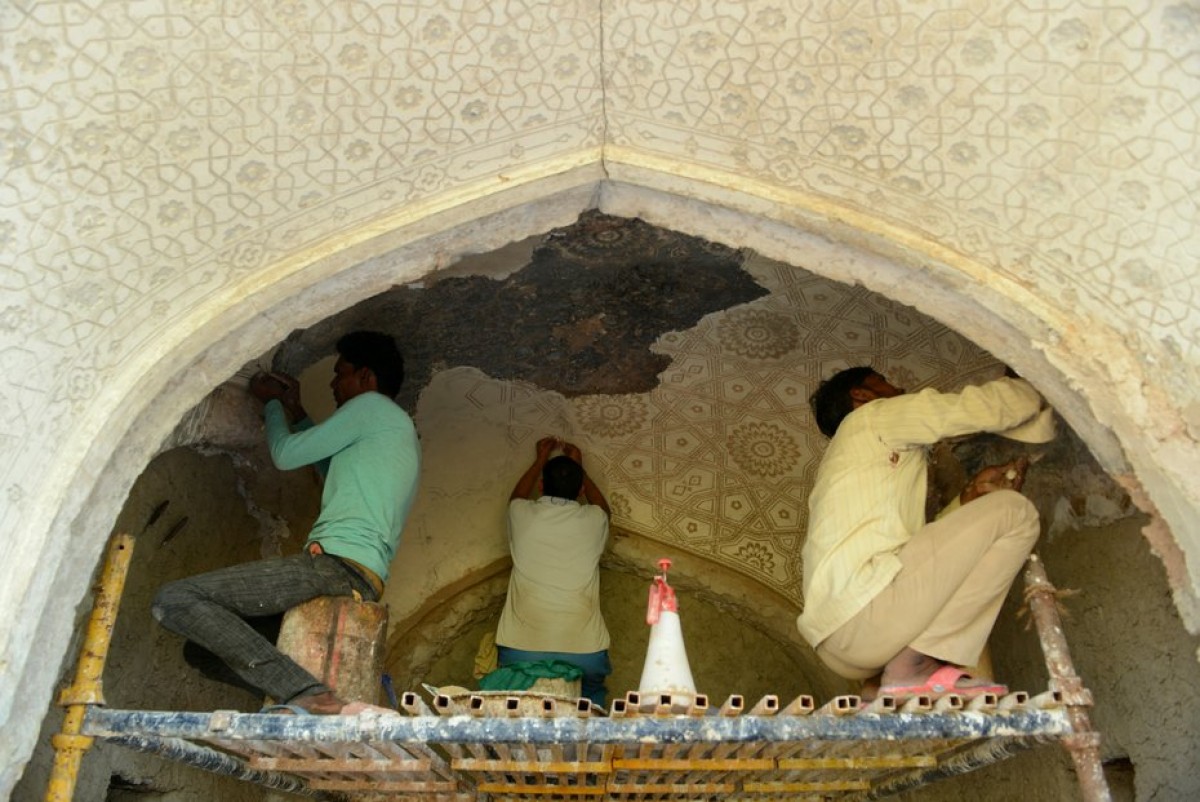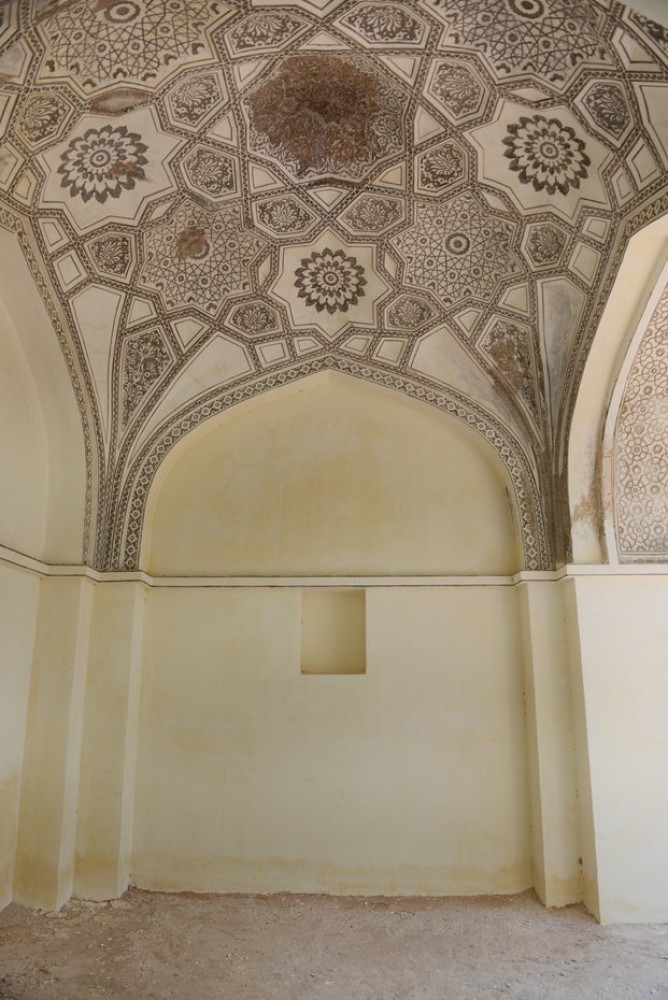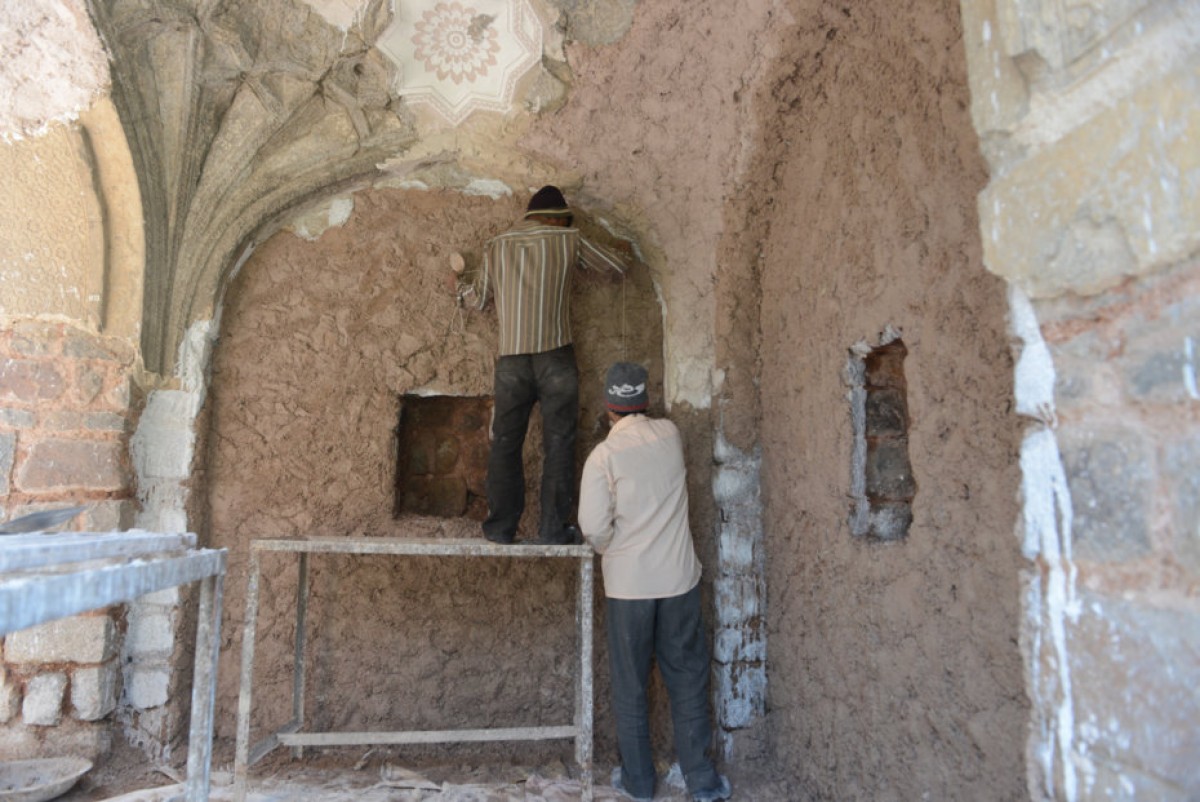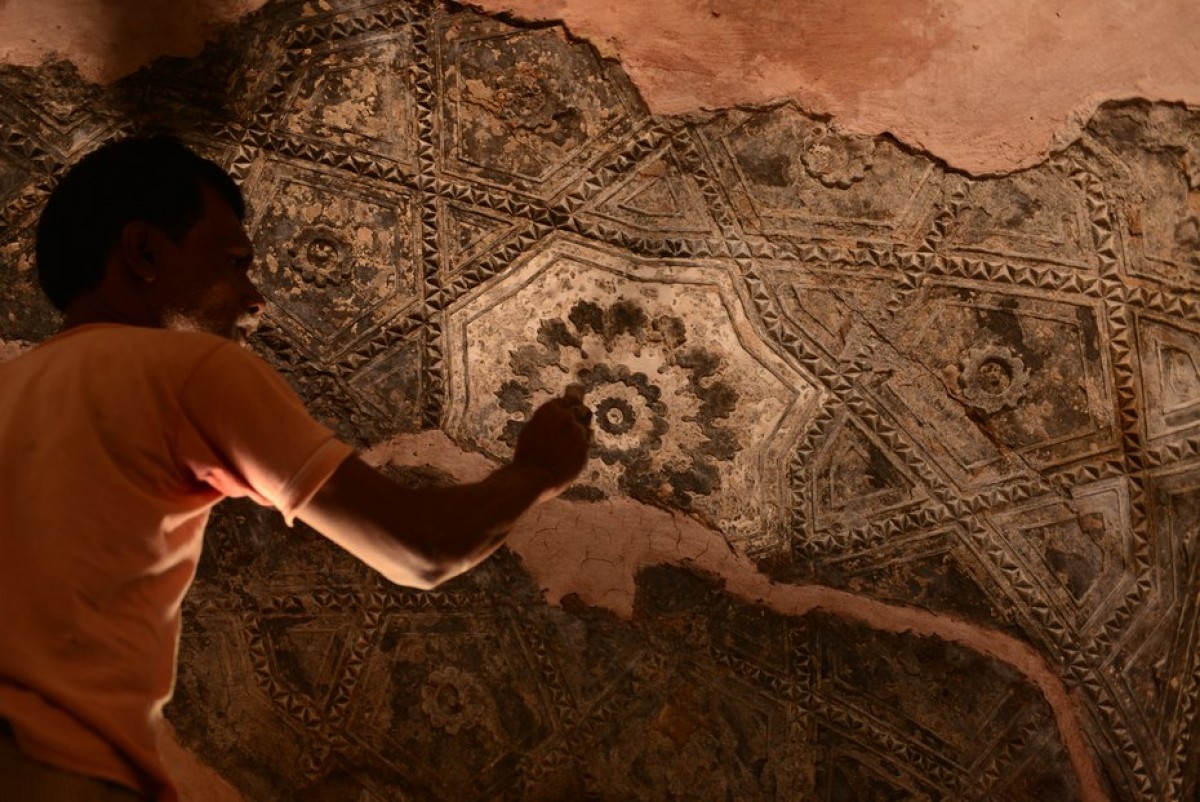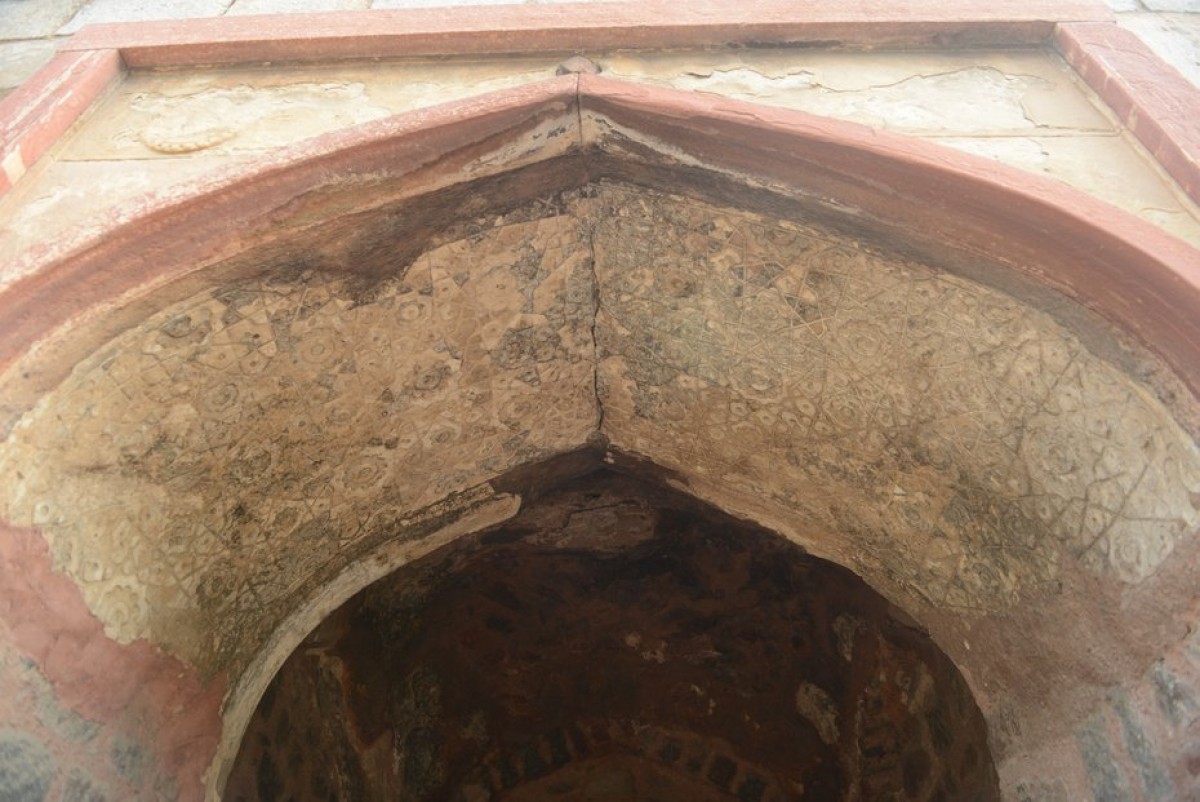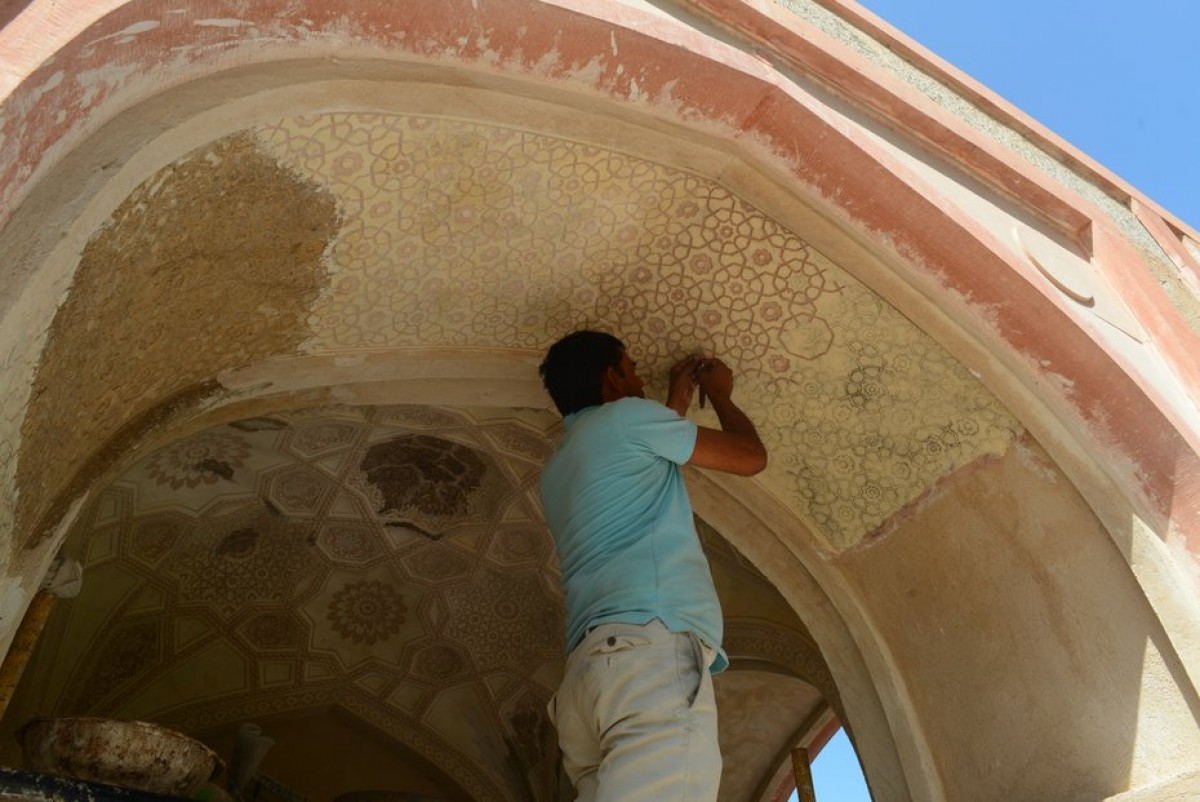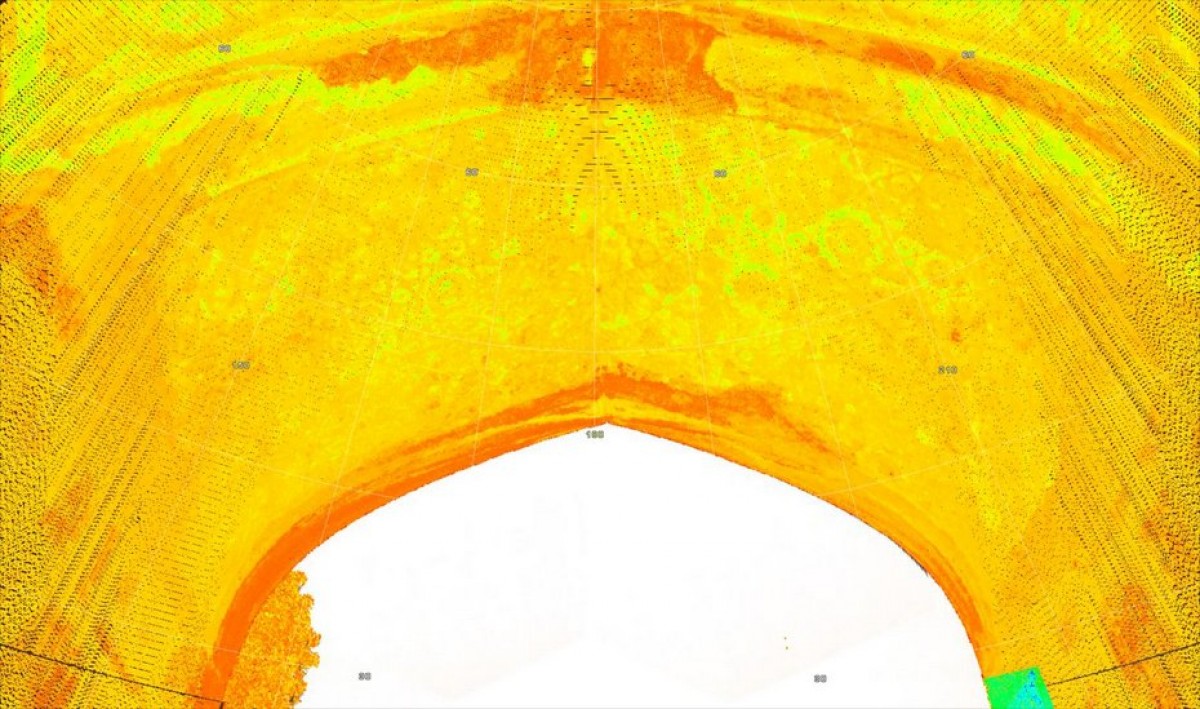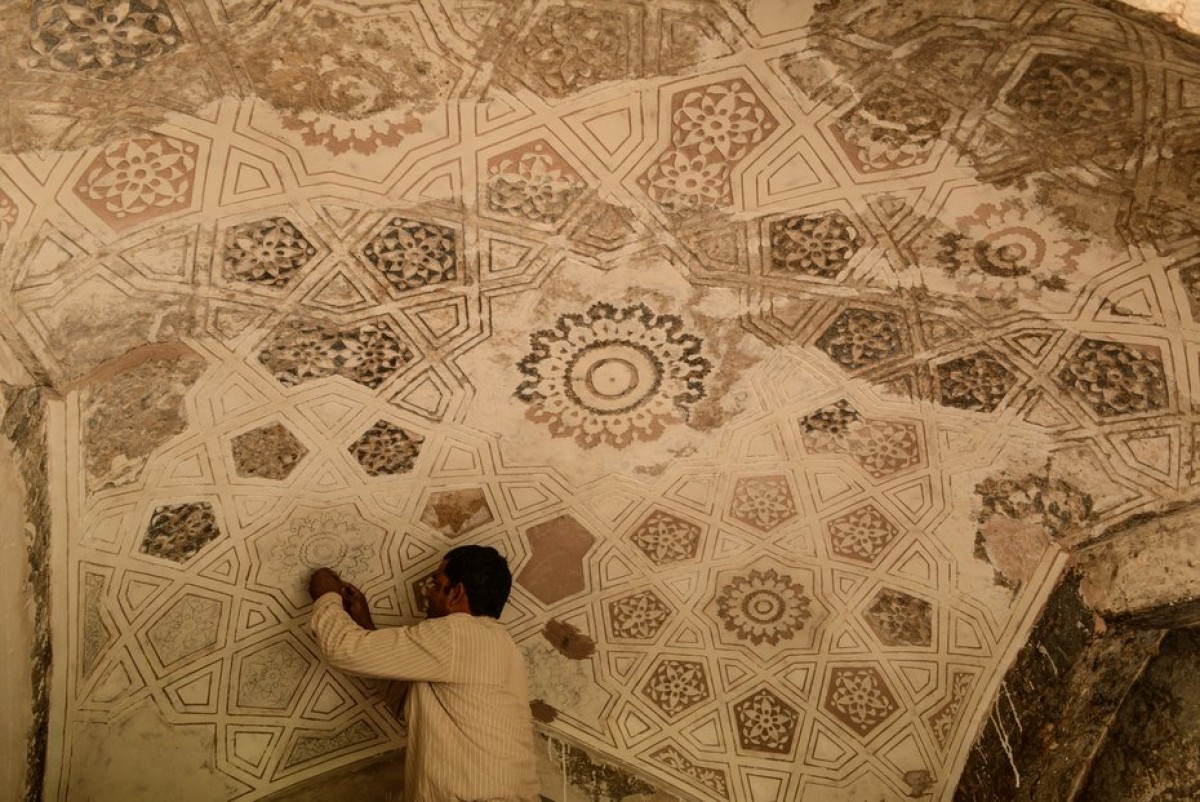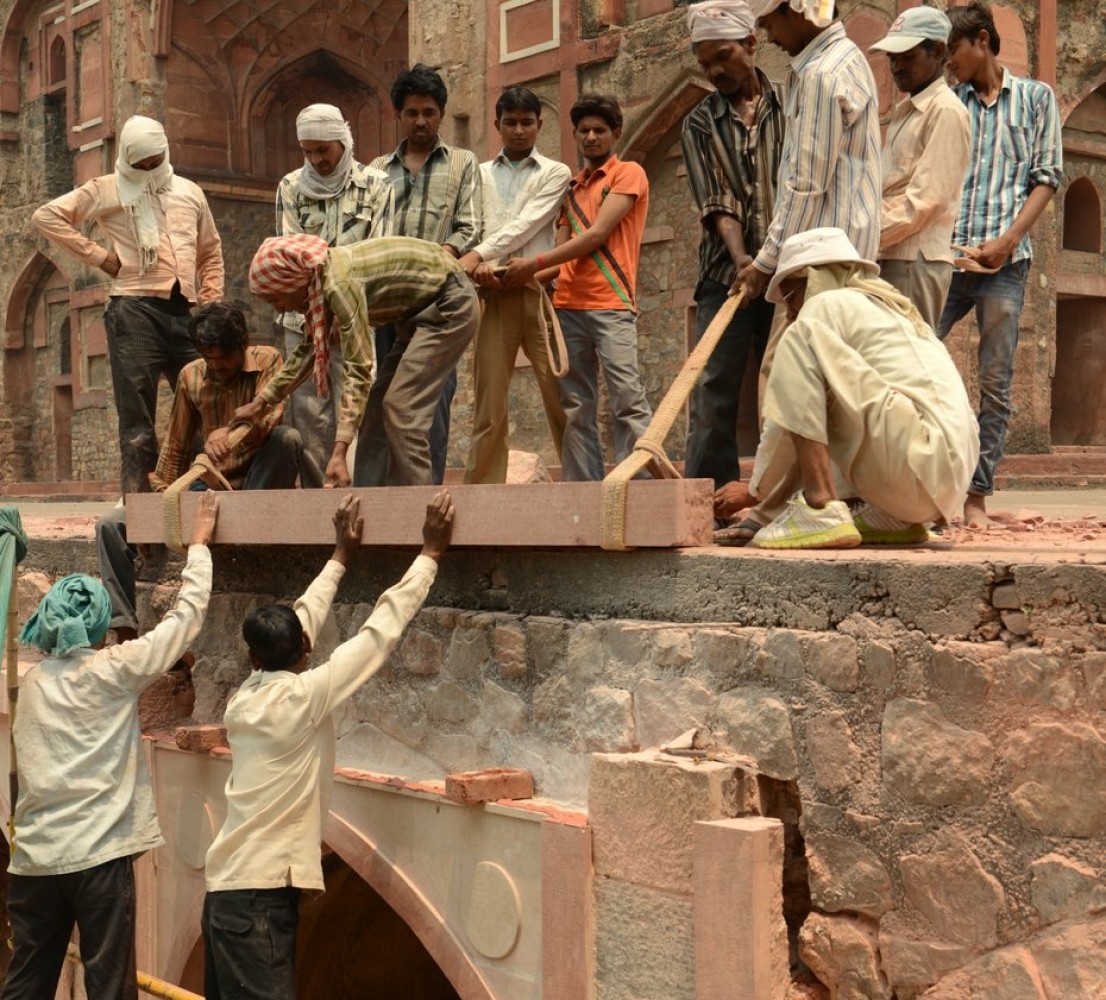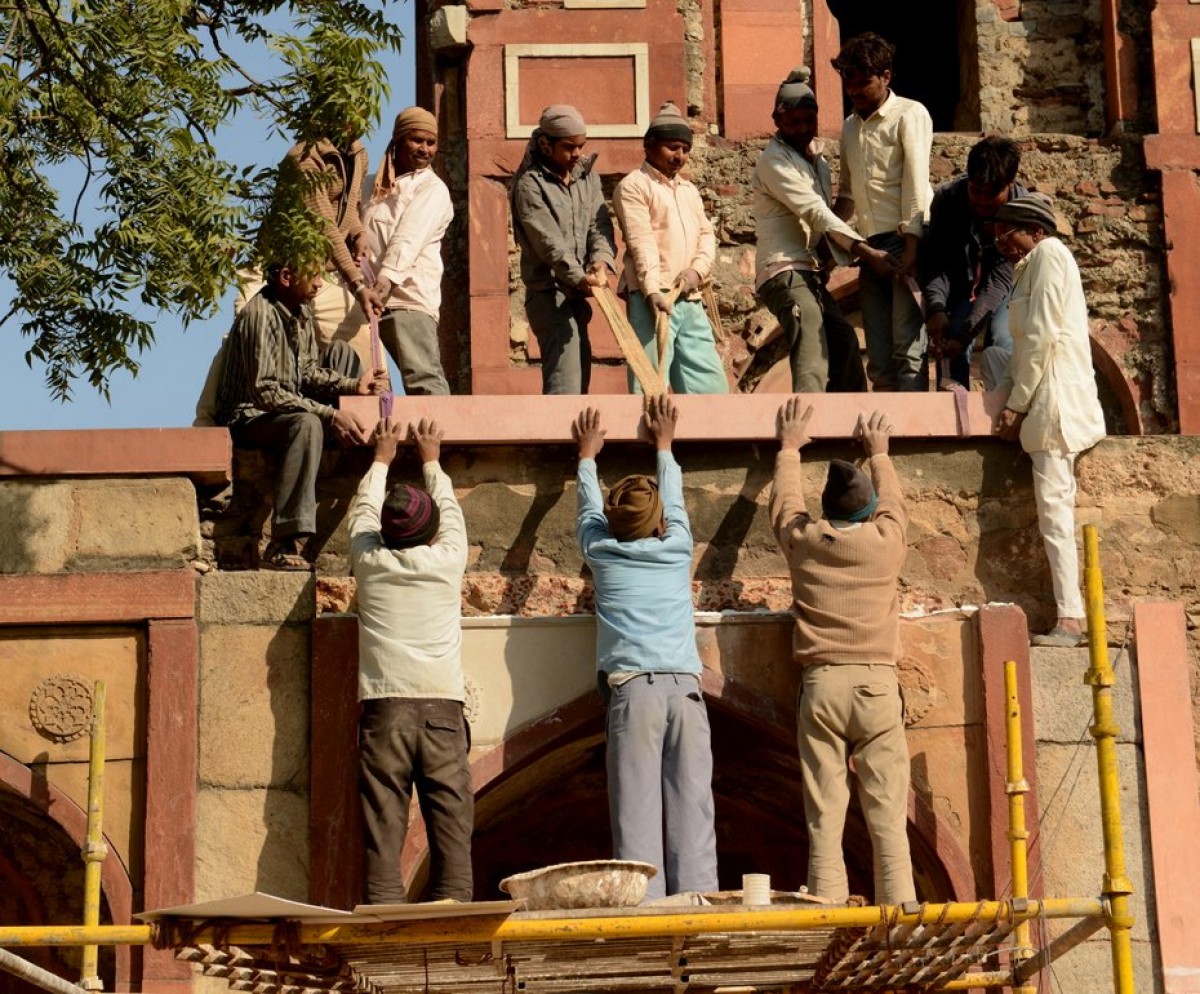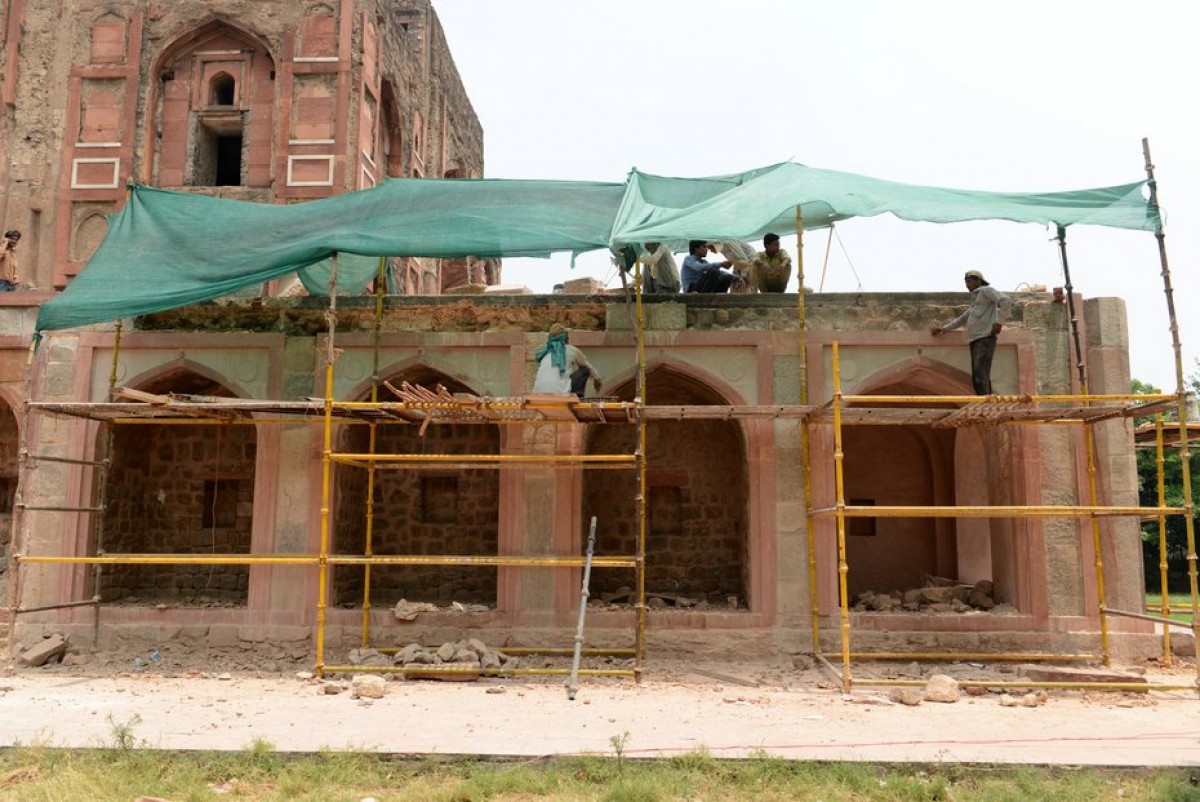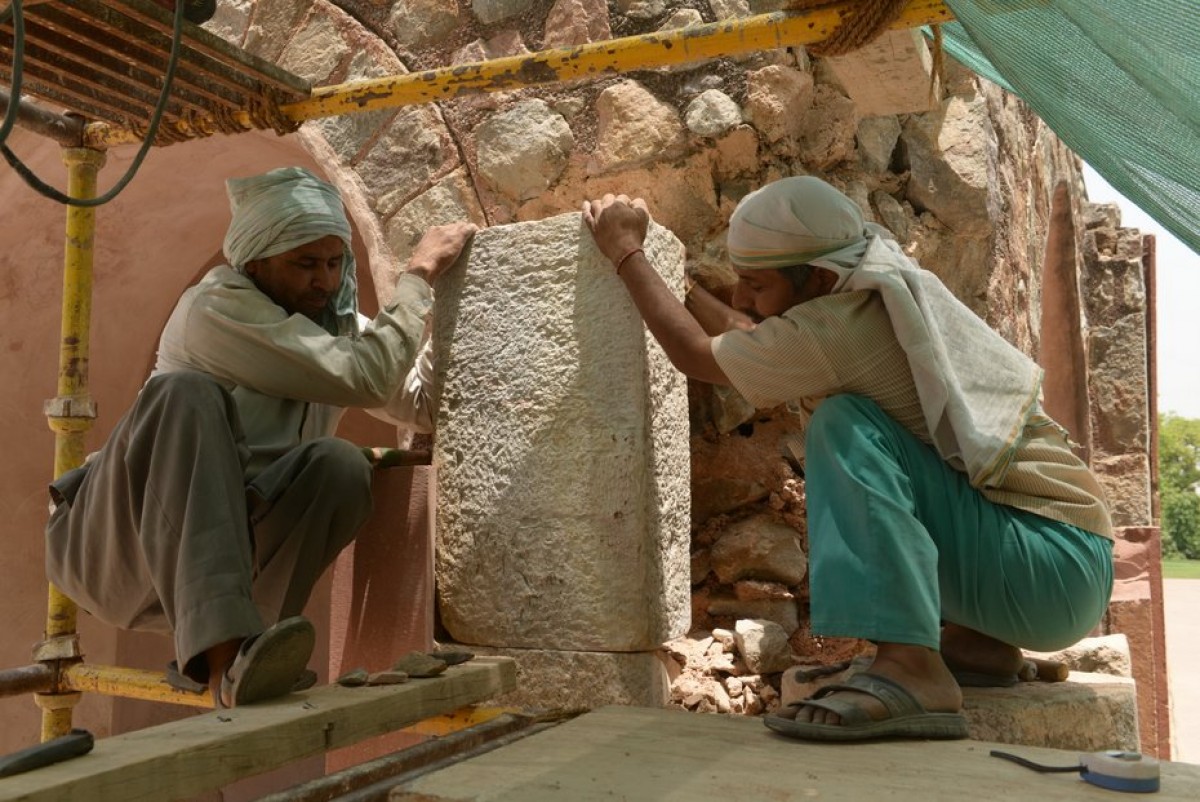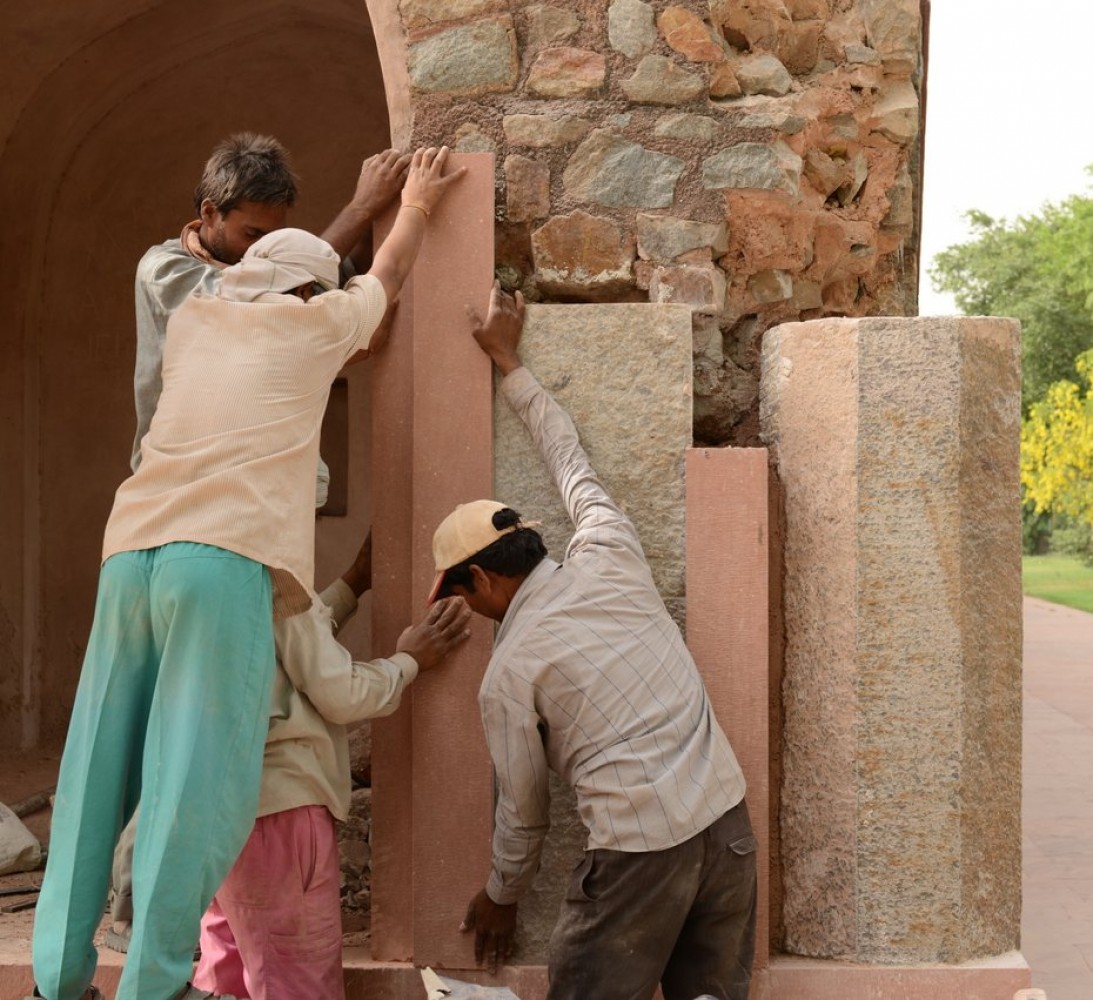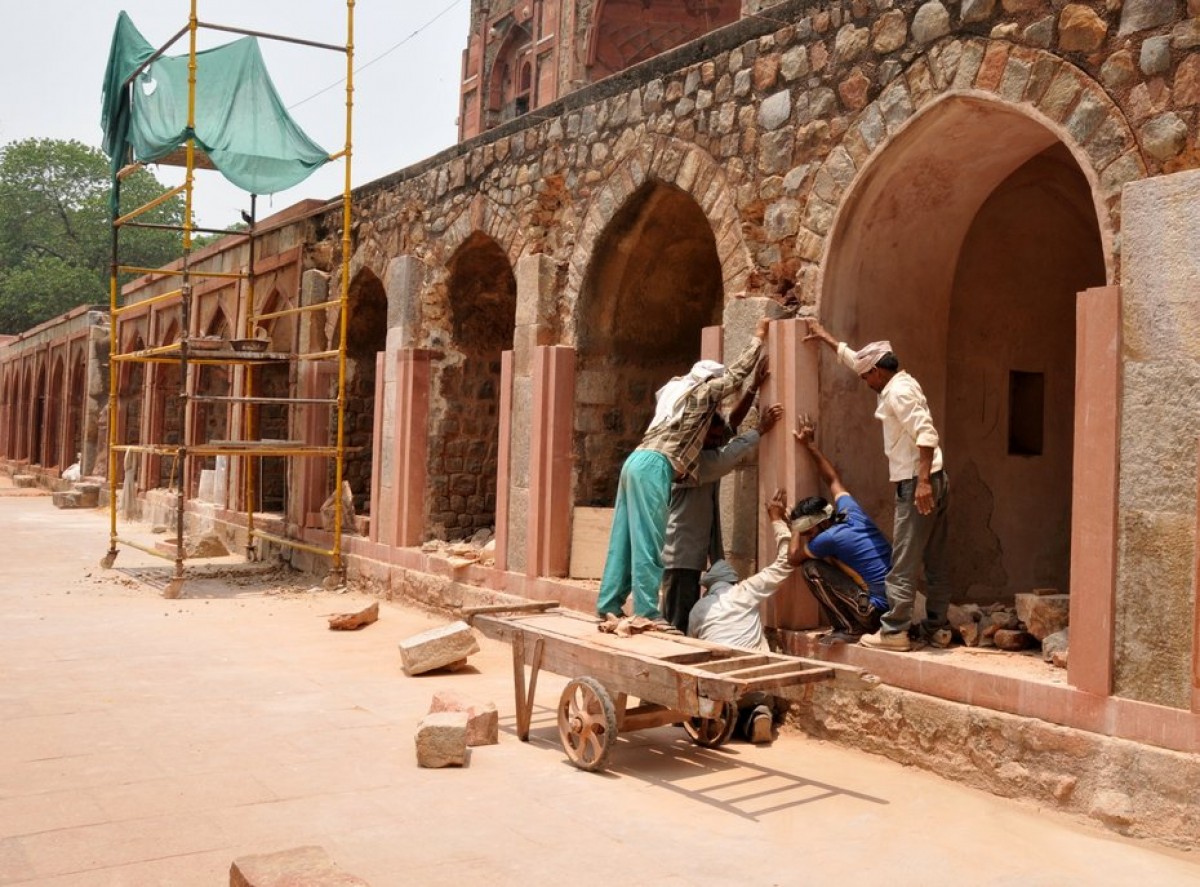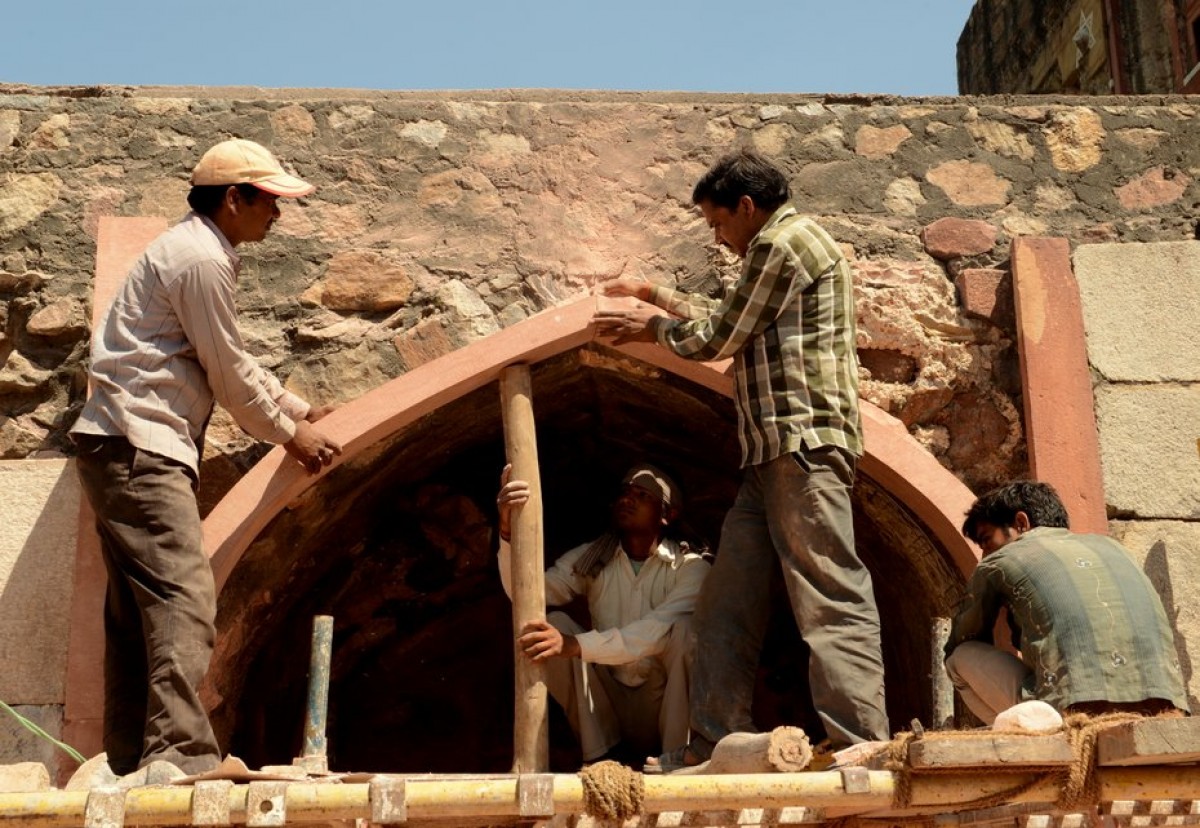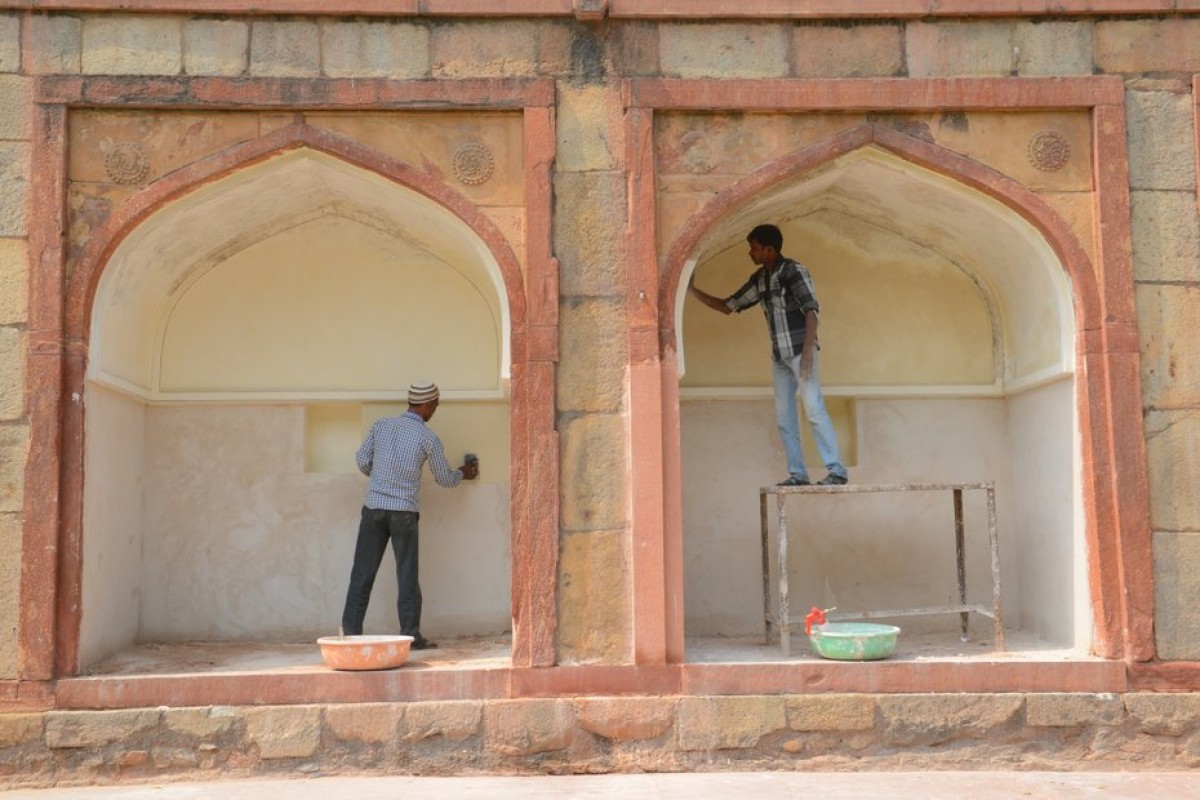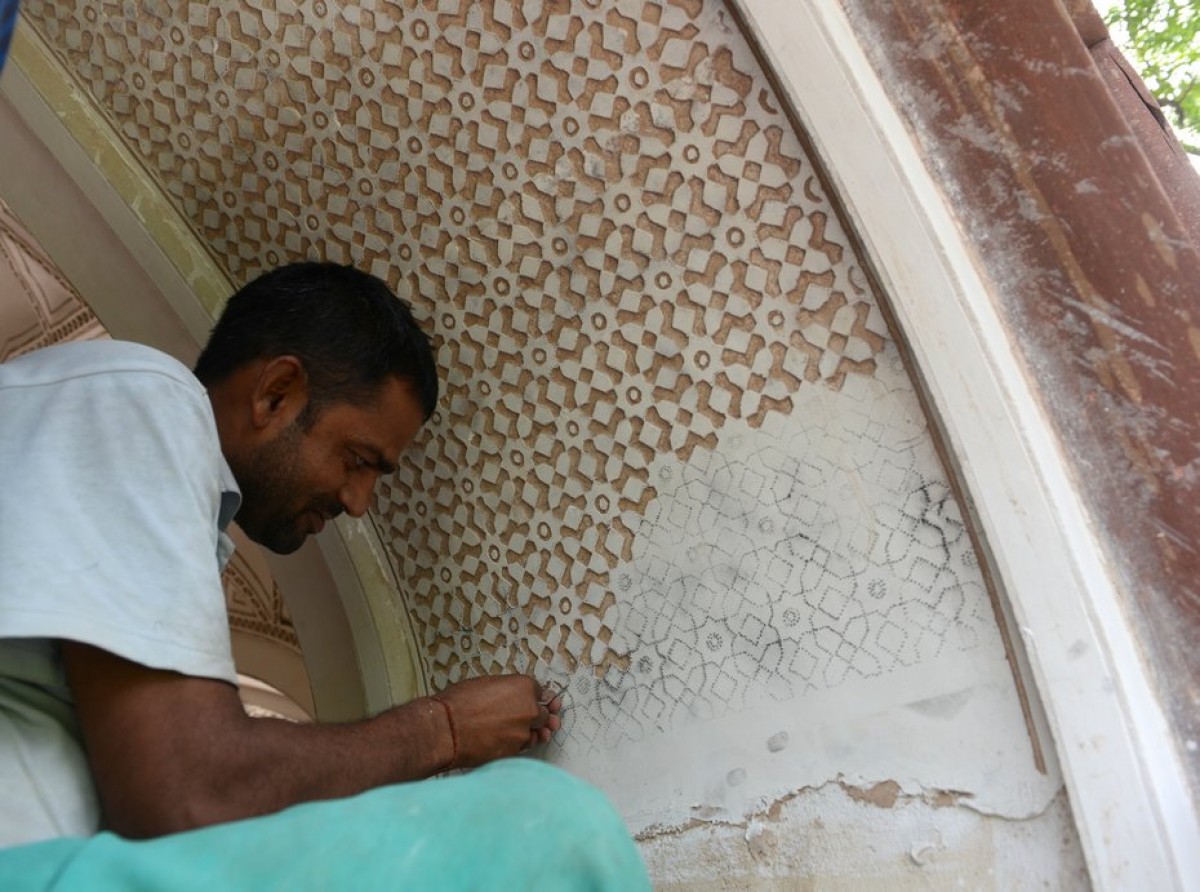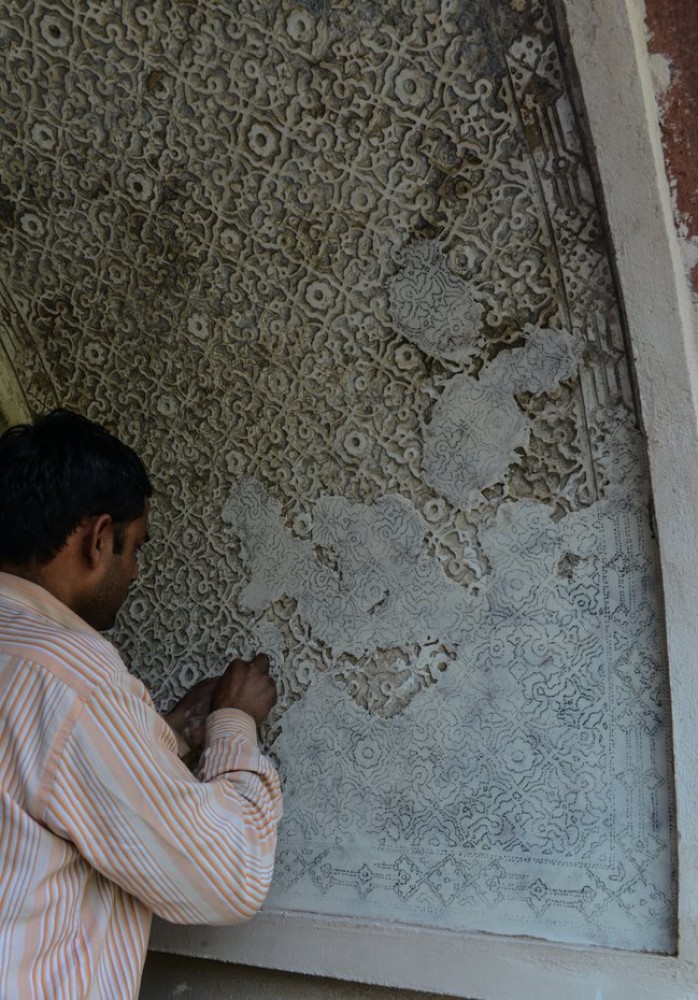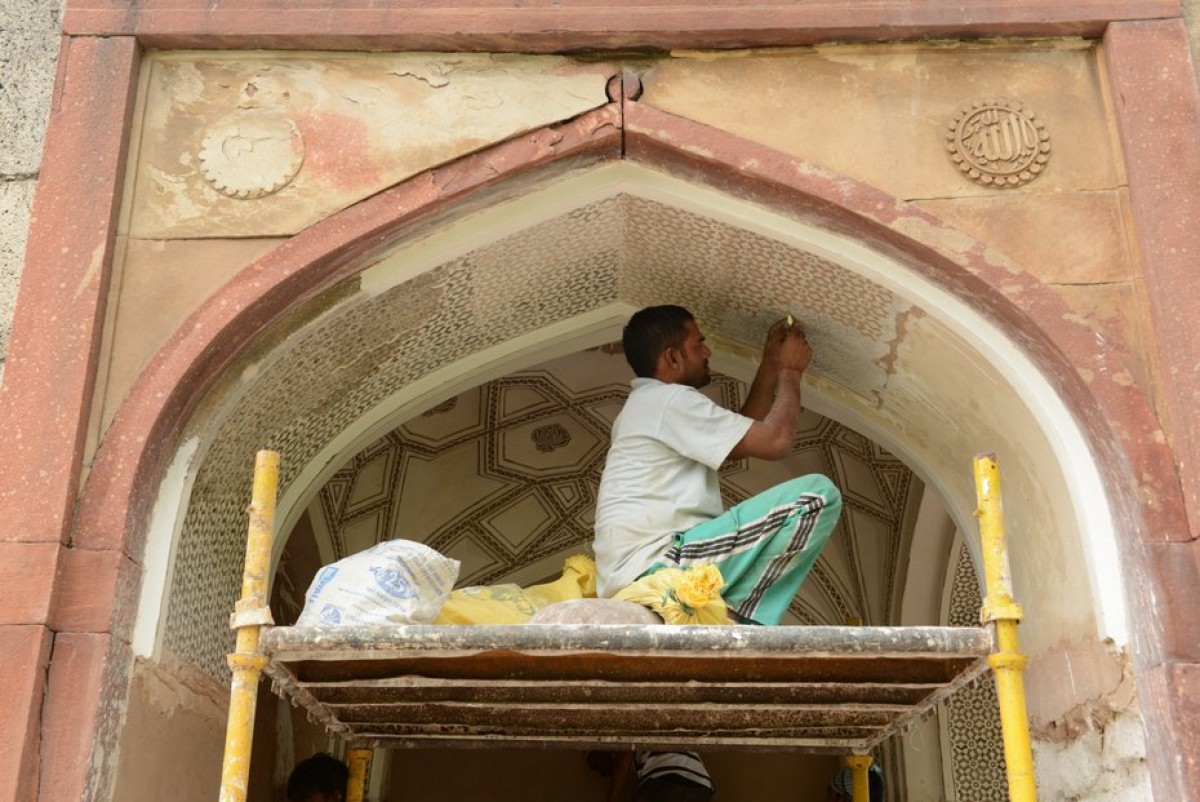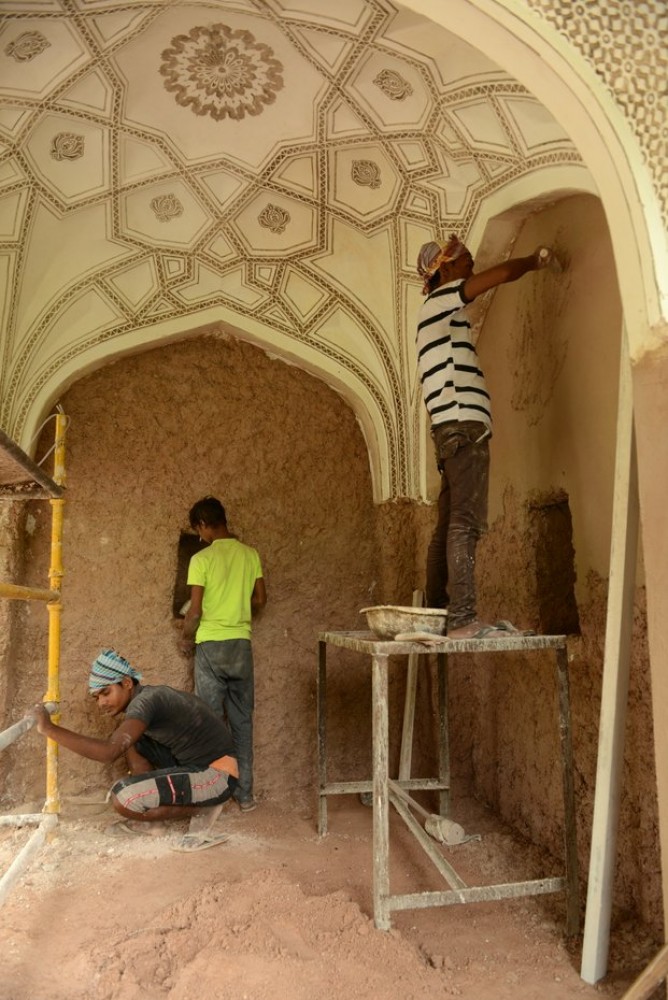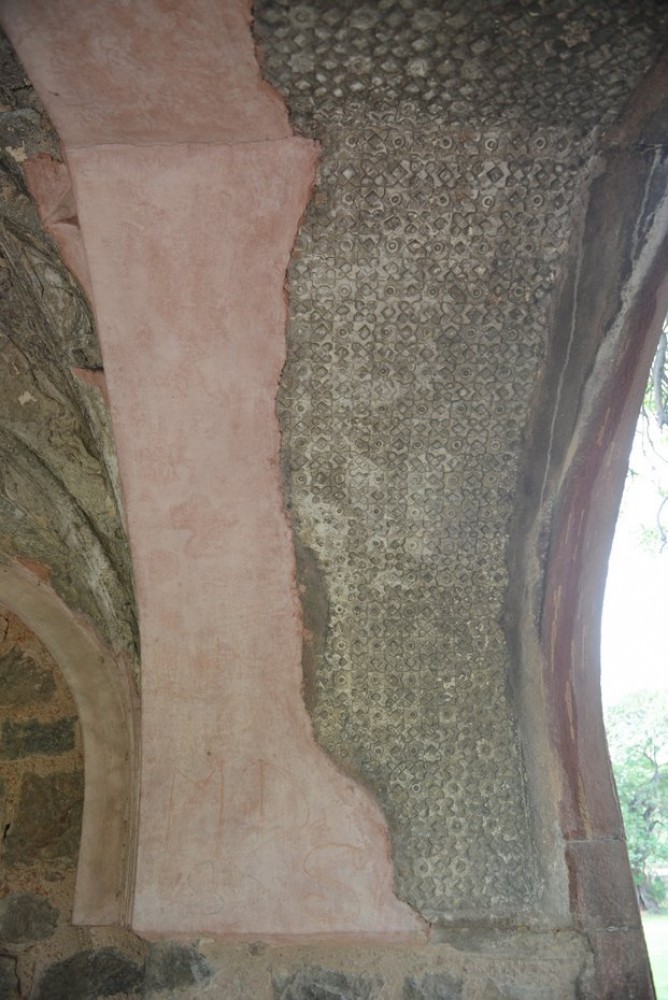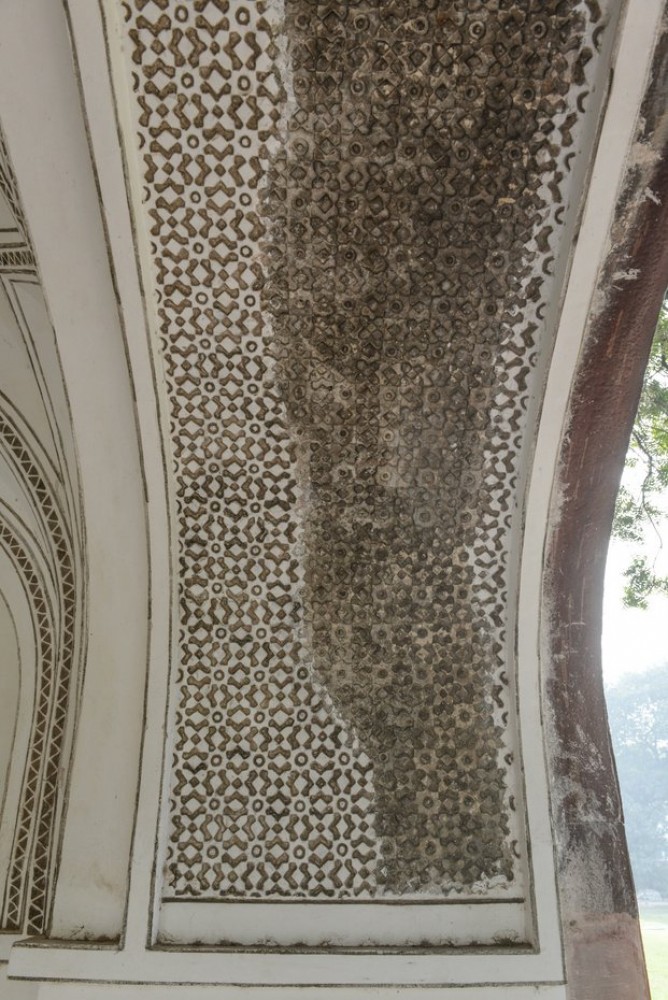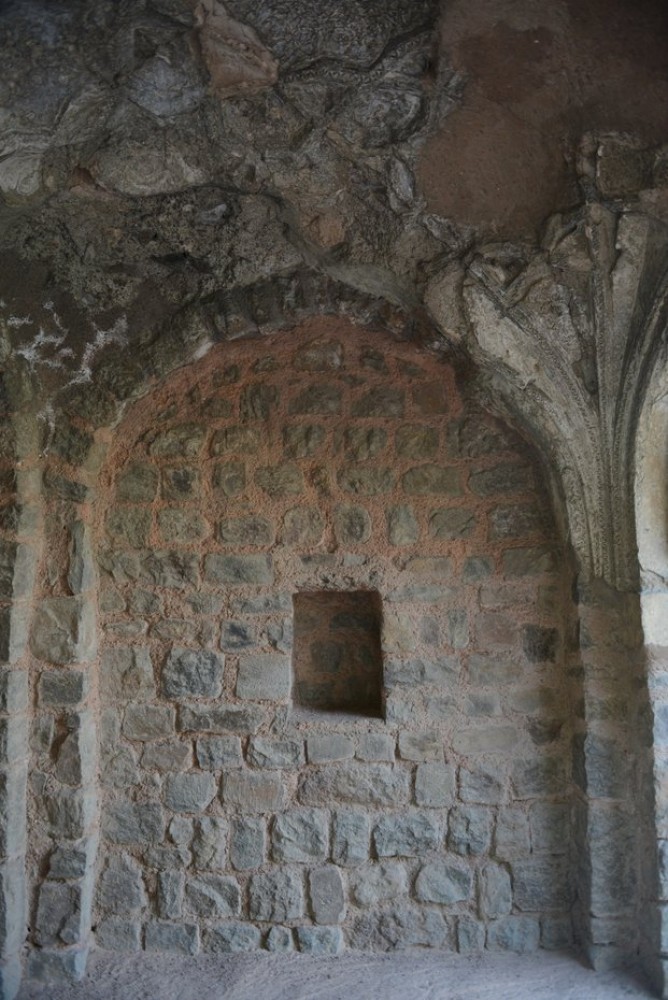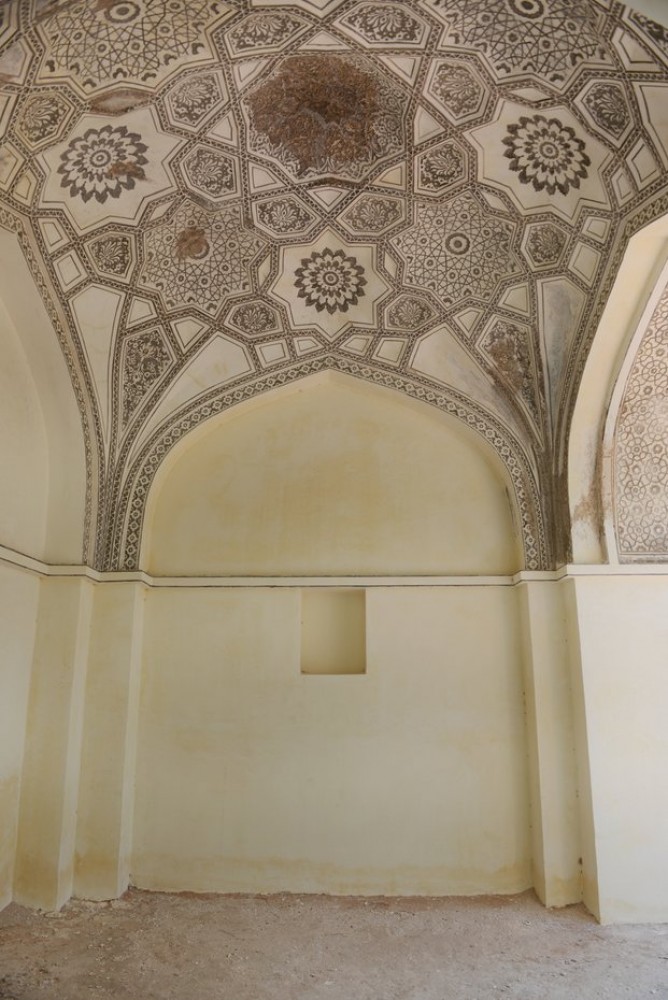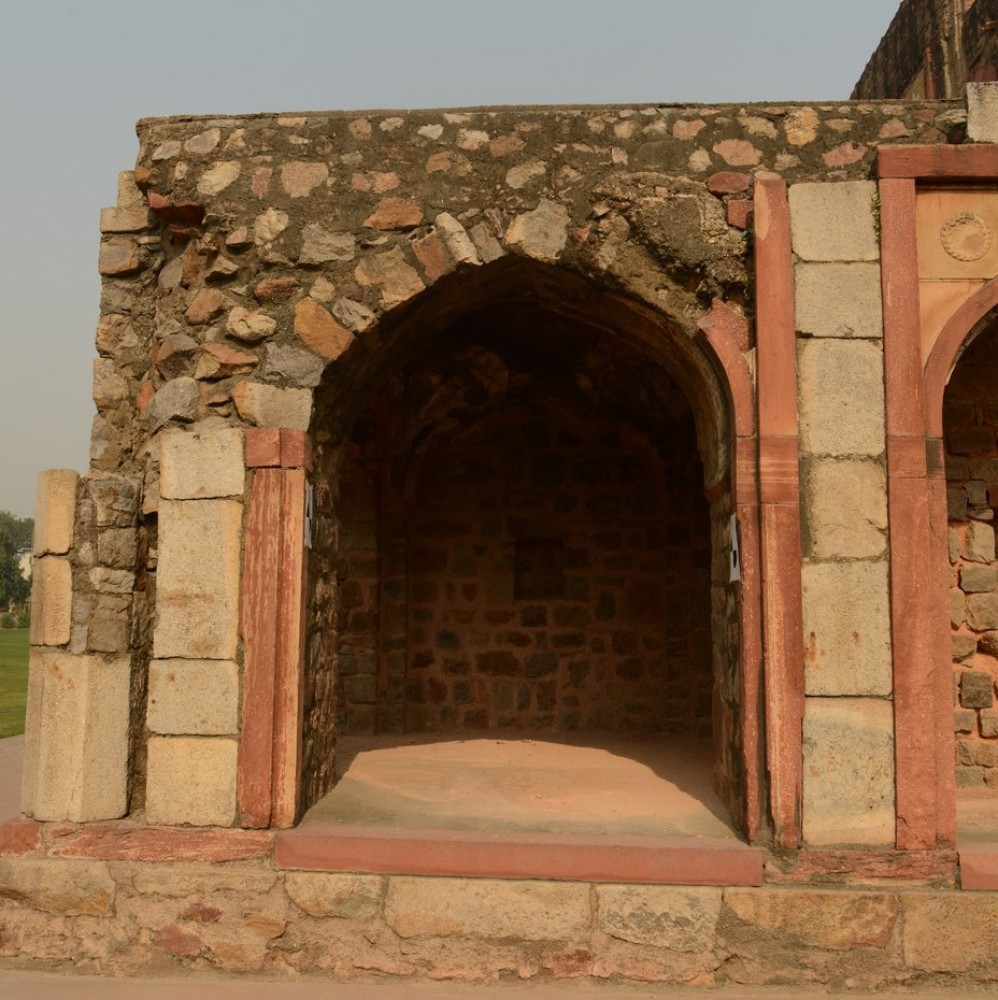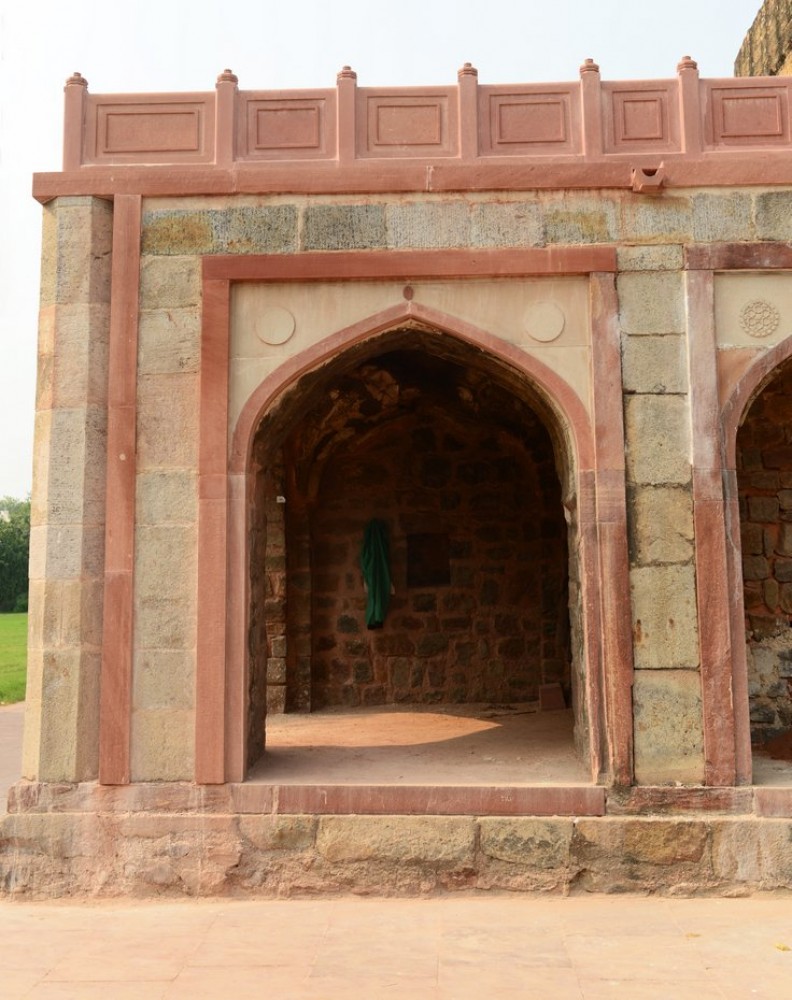
-
0Unique medallions existing
-
0Profusely decorated chambers existing each unique in its ornamentation
The ground level arcade of Rahim’s Tomb comprises of 17 arches on each of the four facades of the mausoleum. On each of the four facades the corner chambers and three arches contain ornamental incised plasterwork, each unique in its ornamentation; the other arches have plain plasterwork. At the start of the project in 2014, most of the plasterwork on these arches have been lost – replaced by the 2002-5 inappropriate cement-surkhi plaster – in turn causing further deterioration. In the south-east corner chamber, the entire wall surface was now covered with this 2002-5 layer and no conservation works was possible to be undertaken here except to chisel away plasterwork from areas immediately adjoining the sandstone elements.
In all other arches with ornamental plasterwork, the missing portions, inappropriately plastered over with plain cement-surkhi plaster are being restored in traditional lime plaster. Careful cleaning of the decorative incised plasterwork is also being carried out using only soft sandpaper and thus revealing original patterns.
In the spandrels of the arches of the ground floor arcade are buff coloured sandstone slabs with decorative medallions. Significantly, each of the arches has a different motif and unusually for an Islamic tomb, the designs are not limited to geometric patterns and plant motifs but also include motifs such as peacocks. Severely damaged medallions, where original patterns could be discerned, were replaced with matching stones which were hand carved on site. Where stones were missing, replacement stones only have a plain medallion. The newly carved stones will require several years of exposure to the elements to oxidize and become darker as with the original stones.
On the external facade, the four corners of the lower arcade, where the dressed stone blocks had been missing were restored as per the original details. Missing sandstone blocks were also replaced with new stones prepared using traditional tools.















































